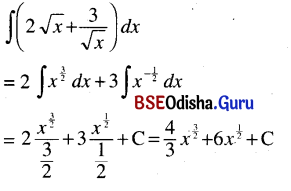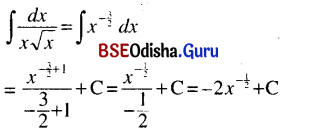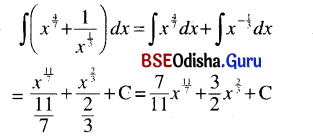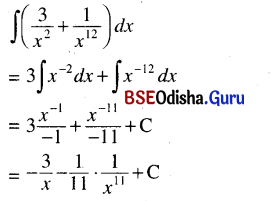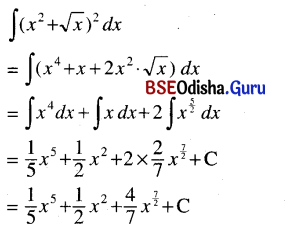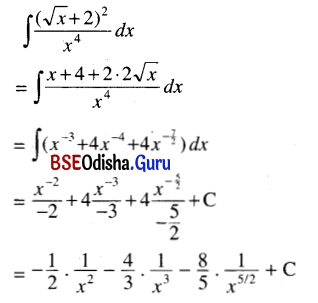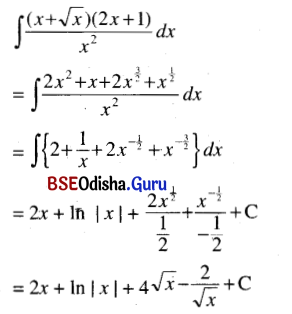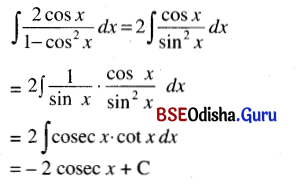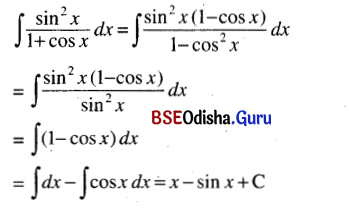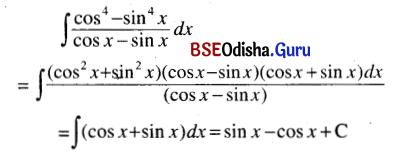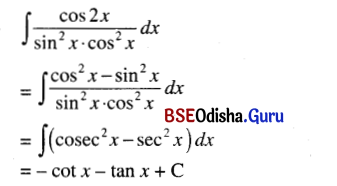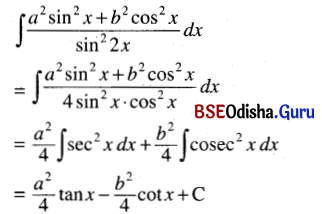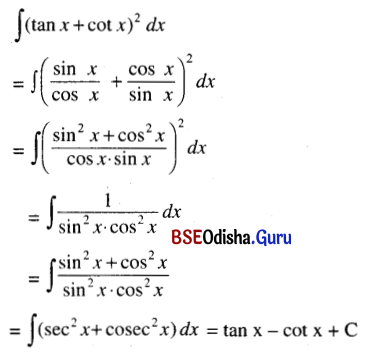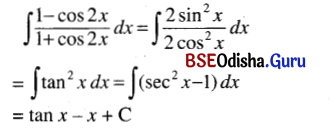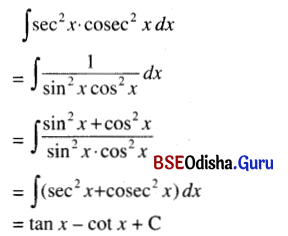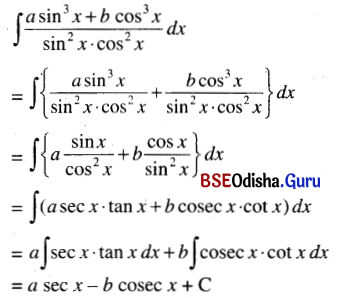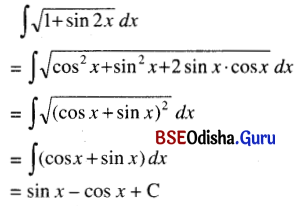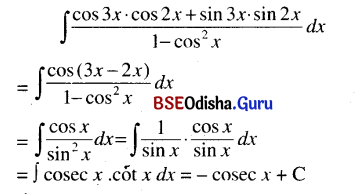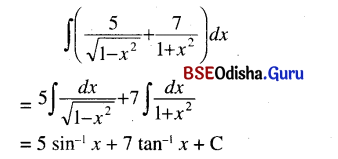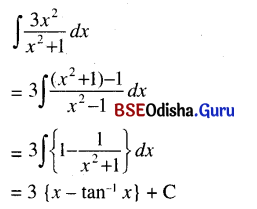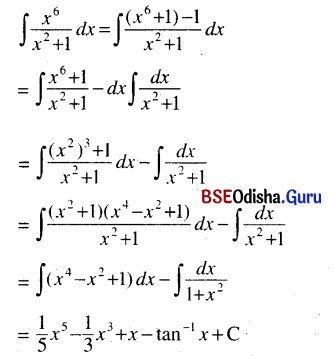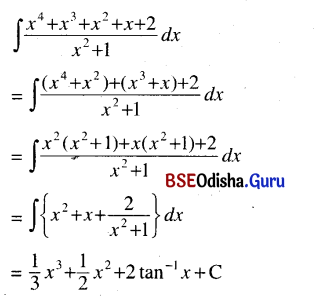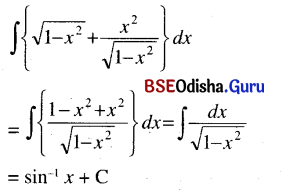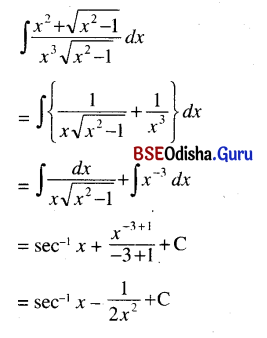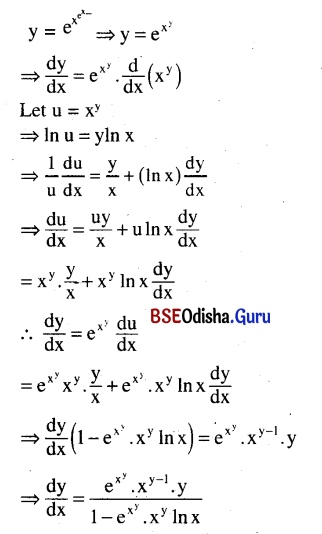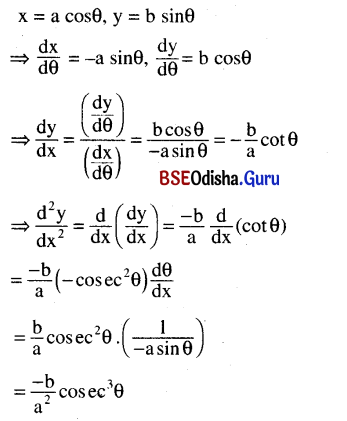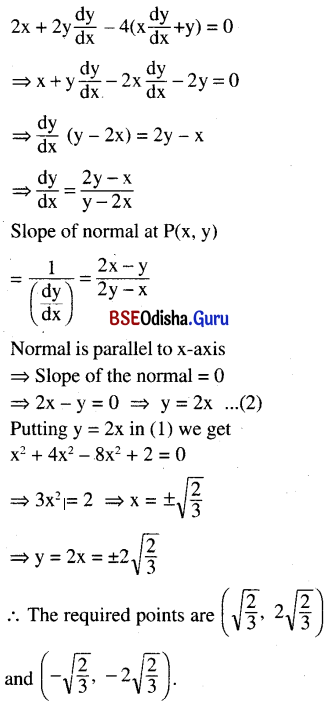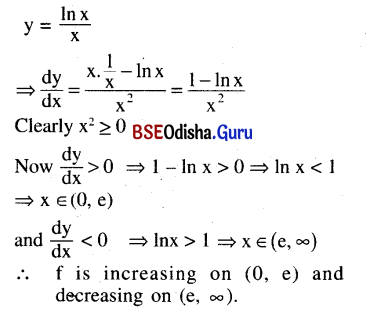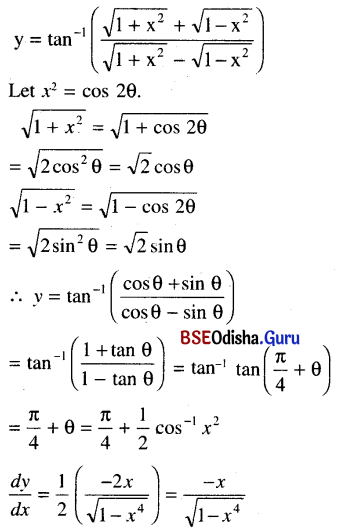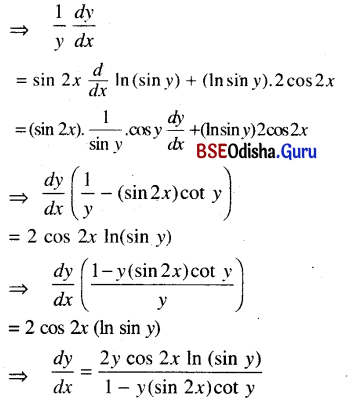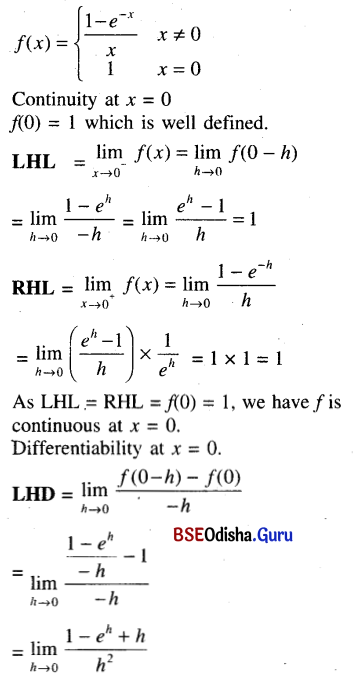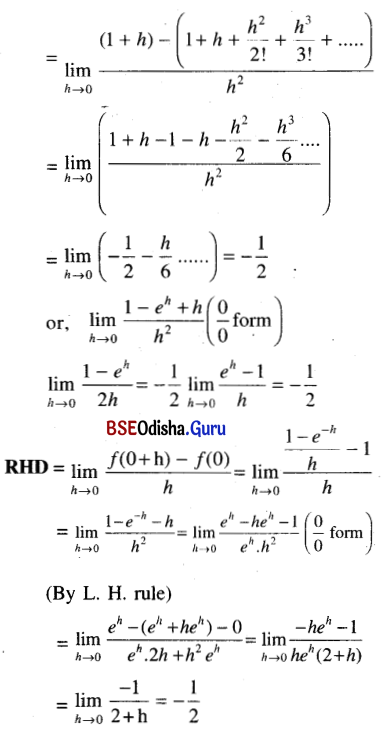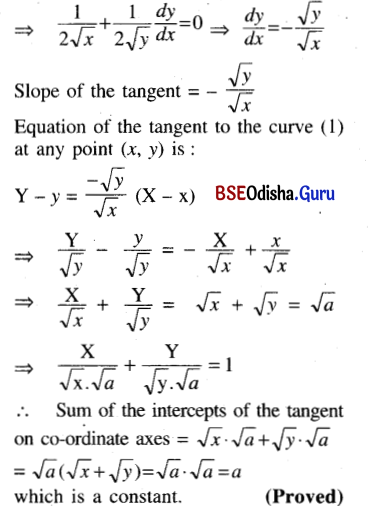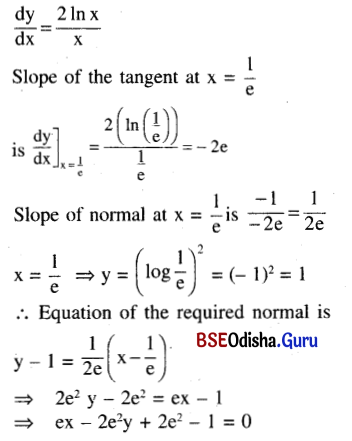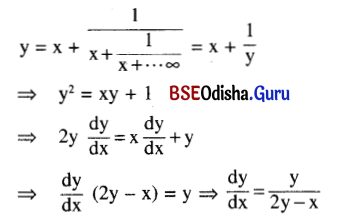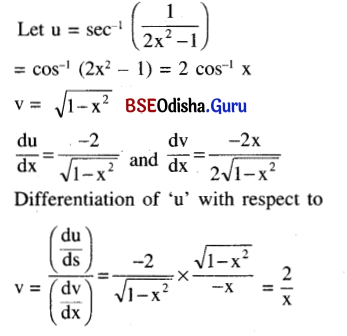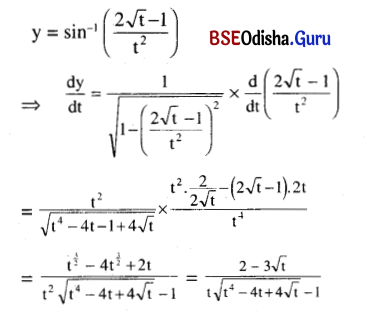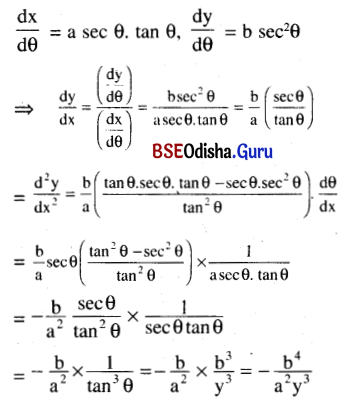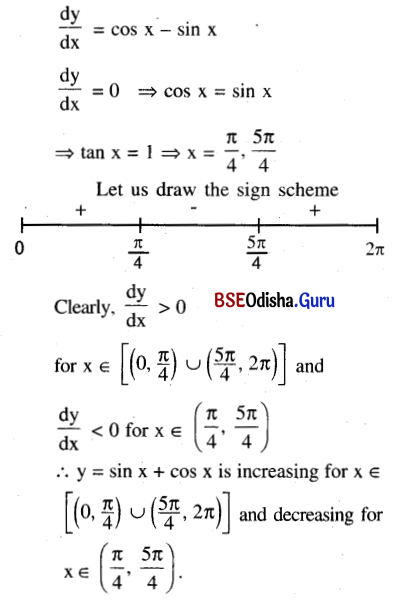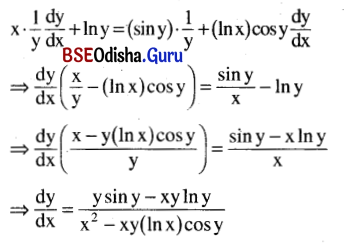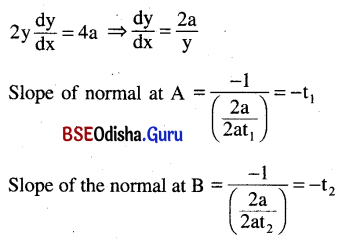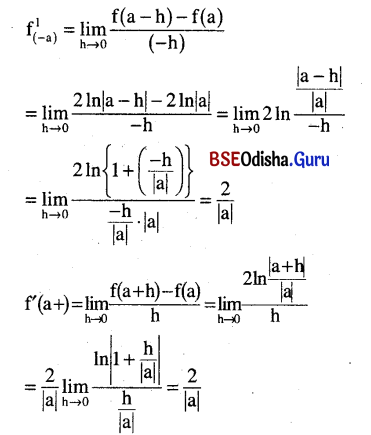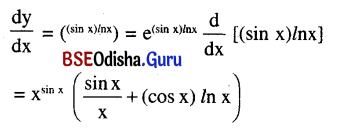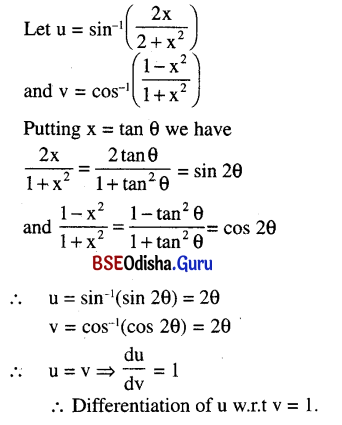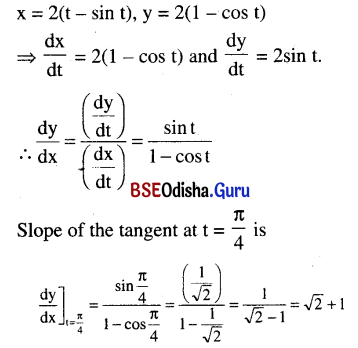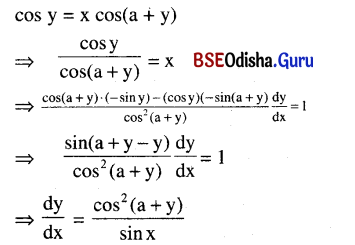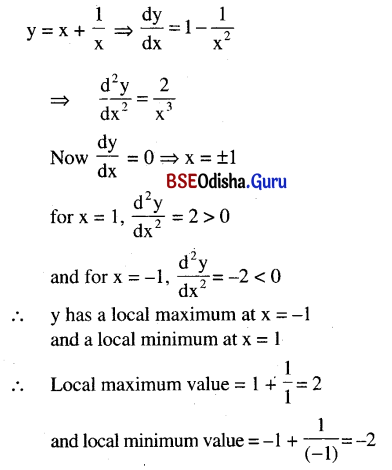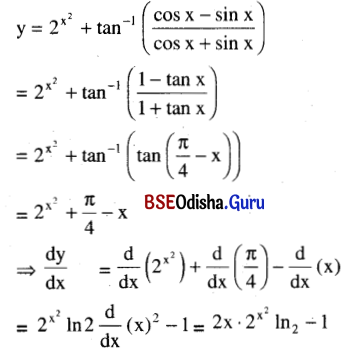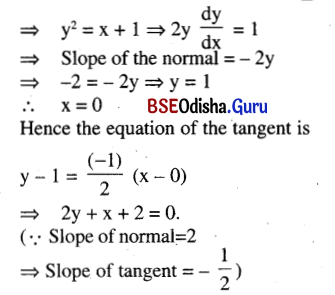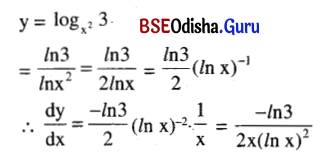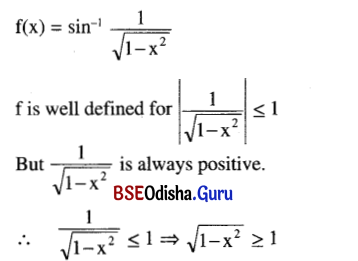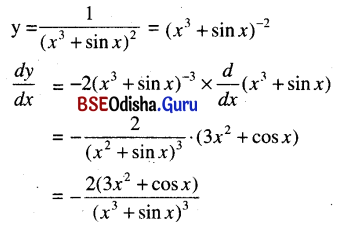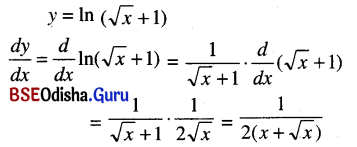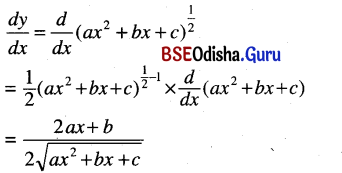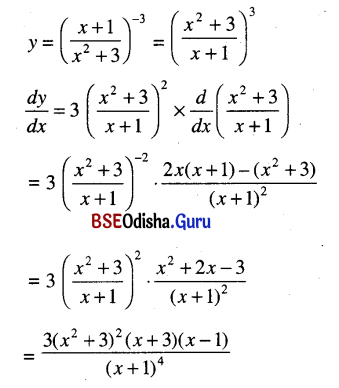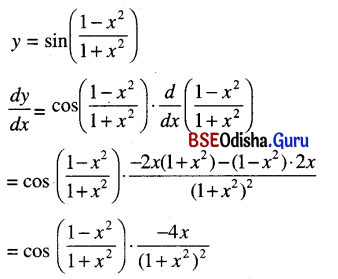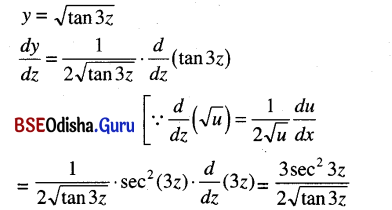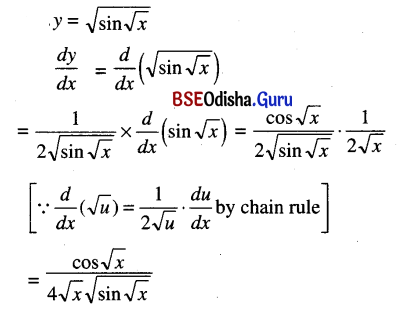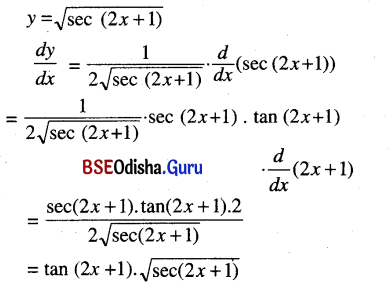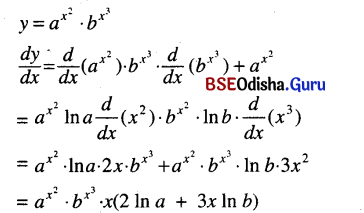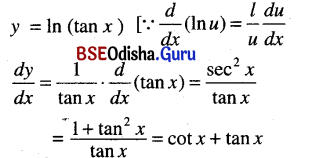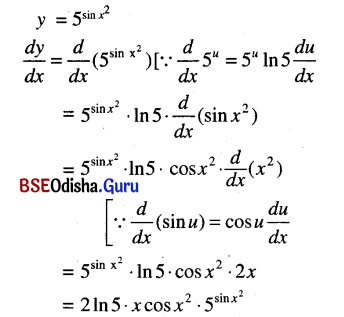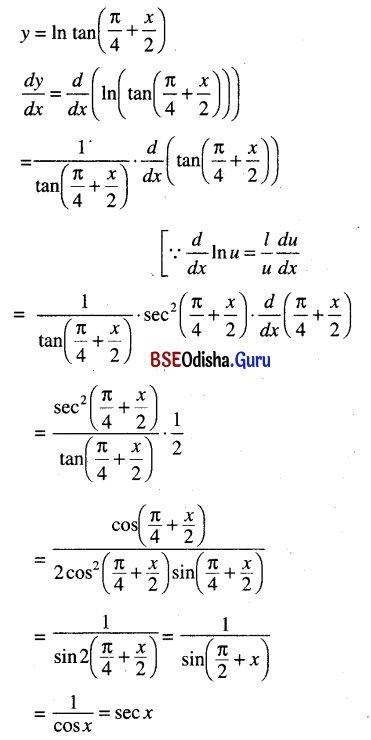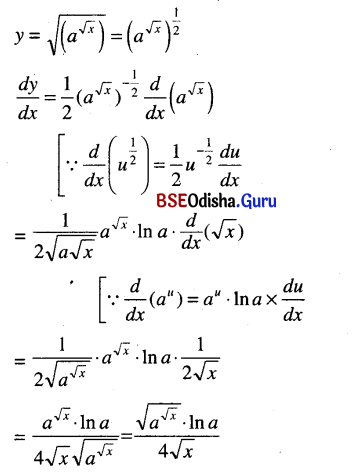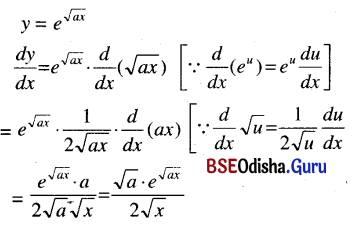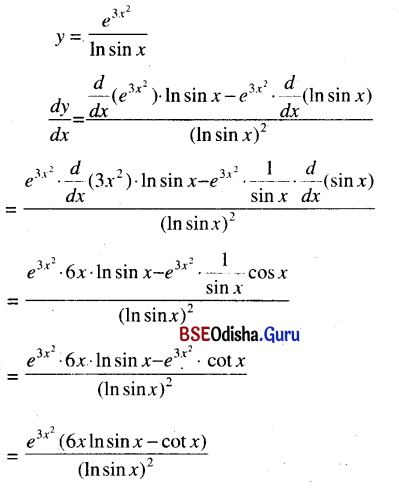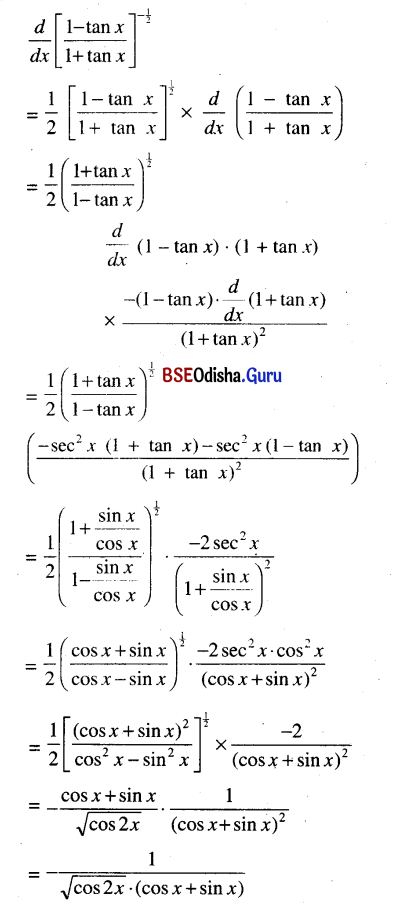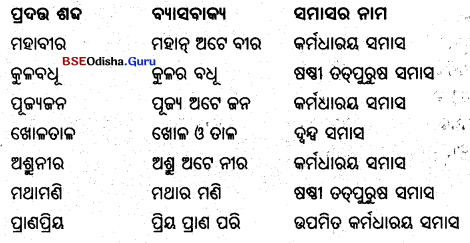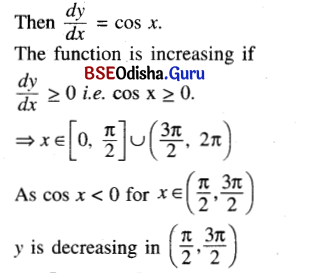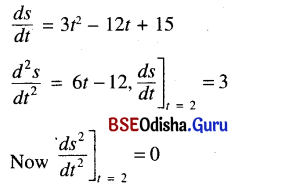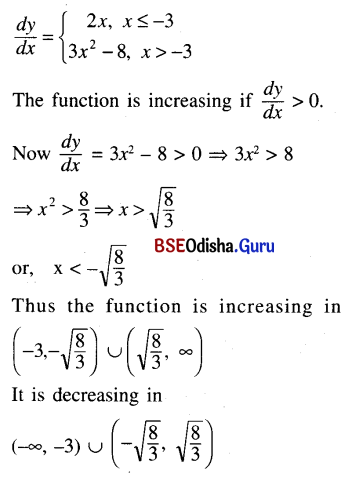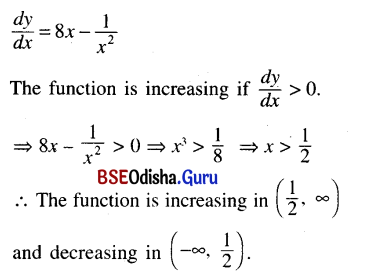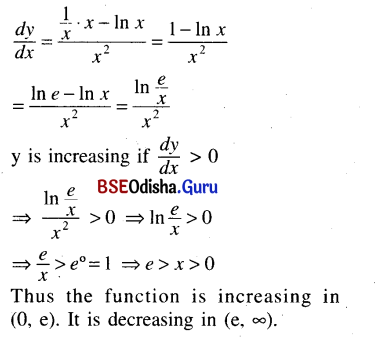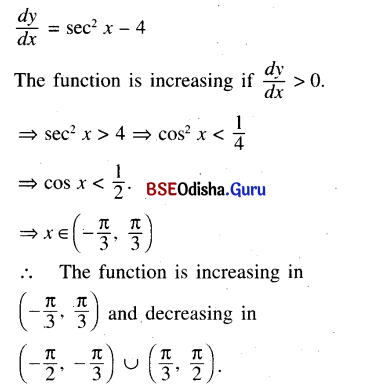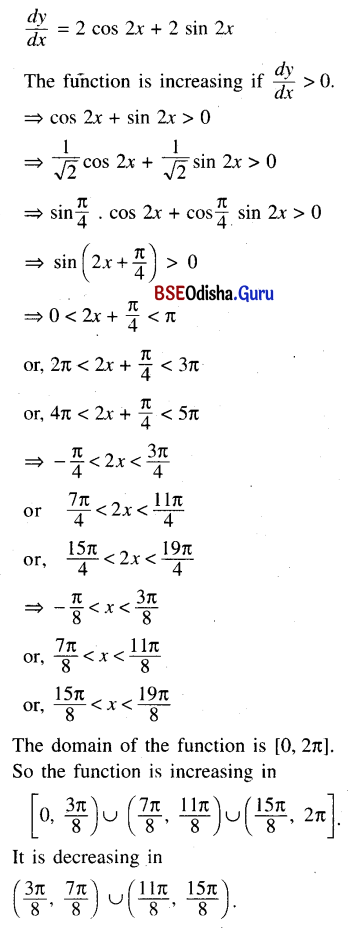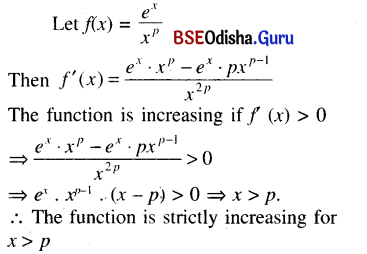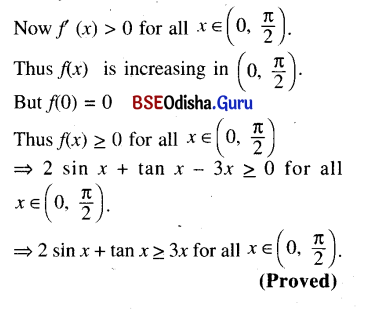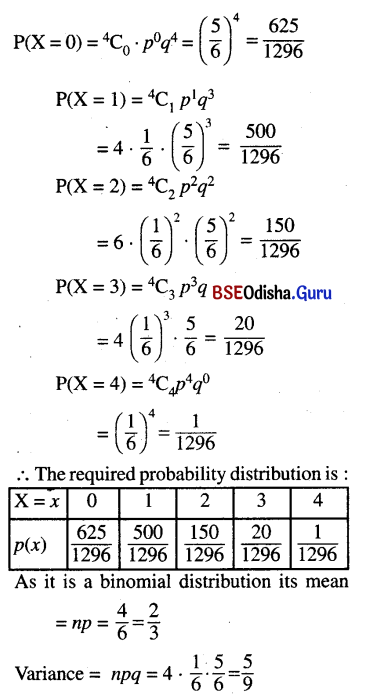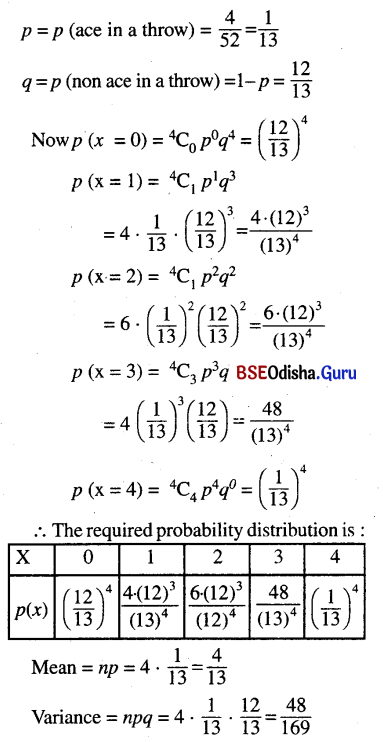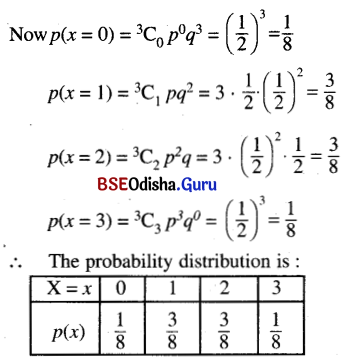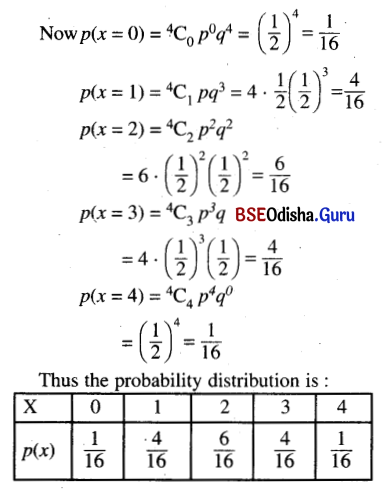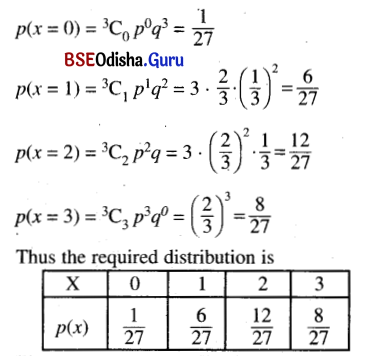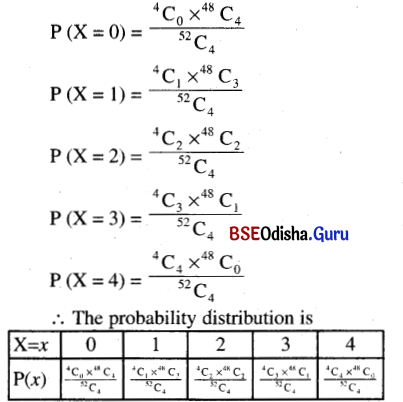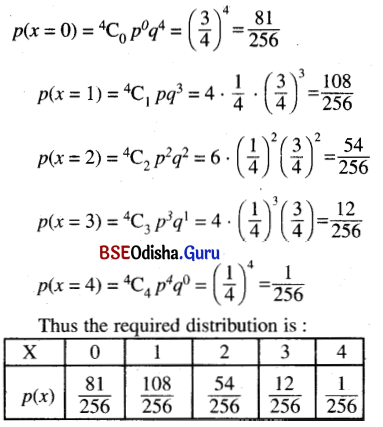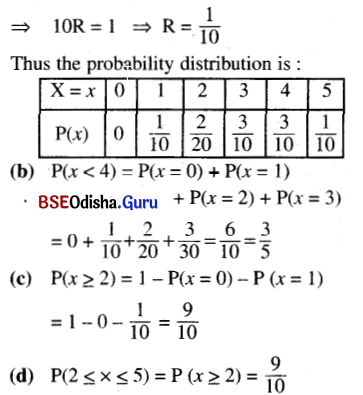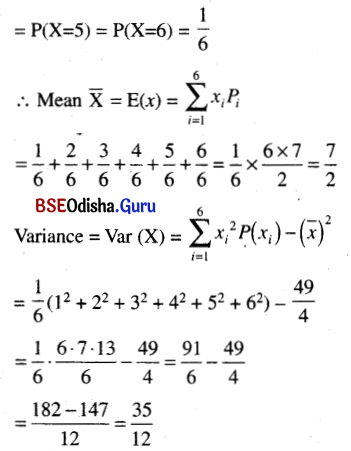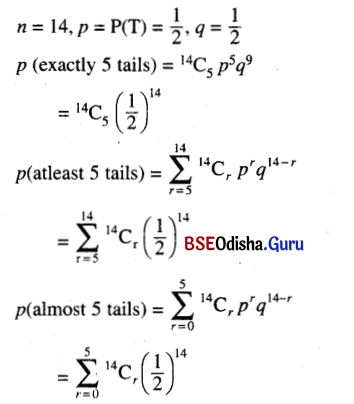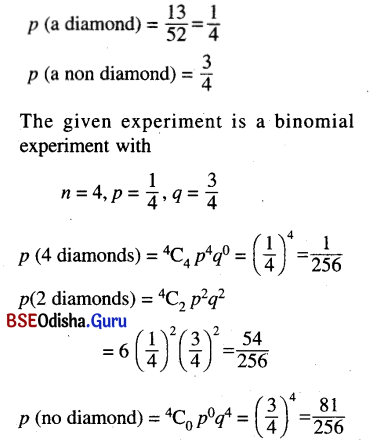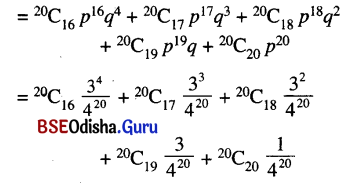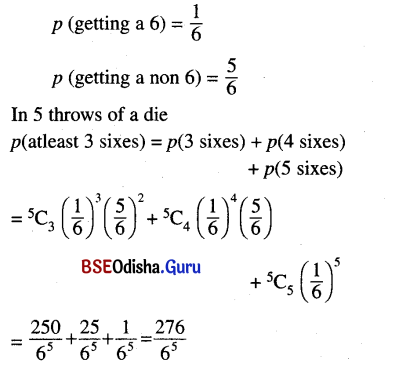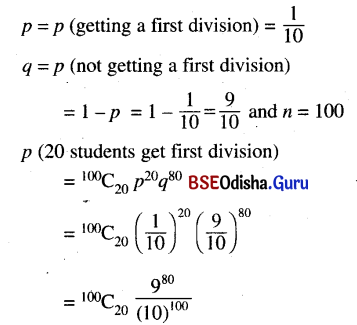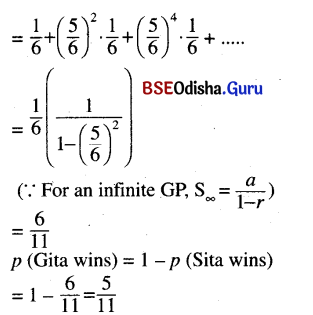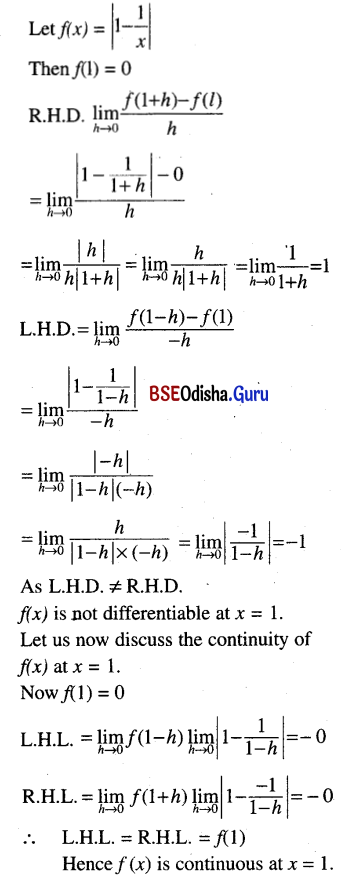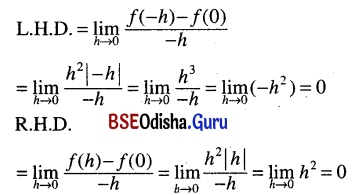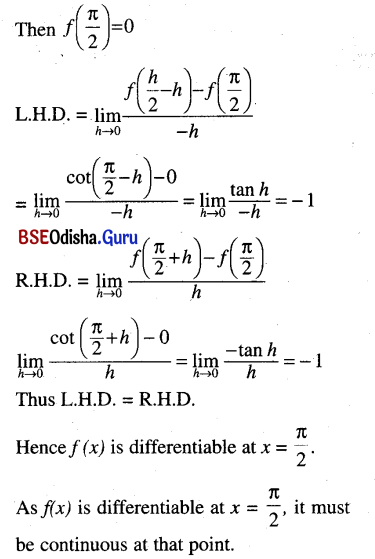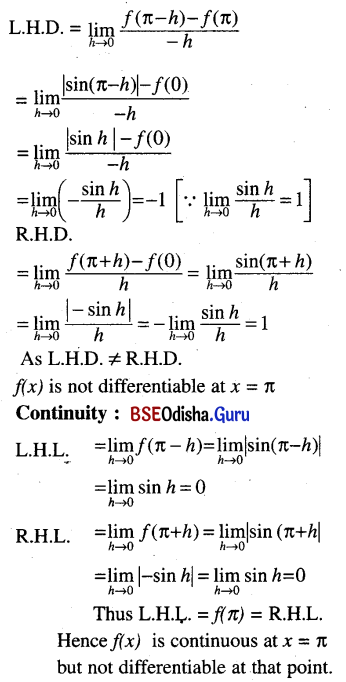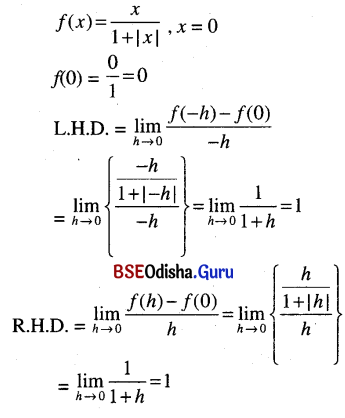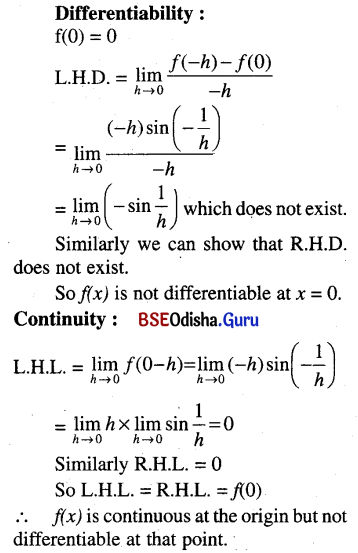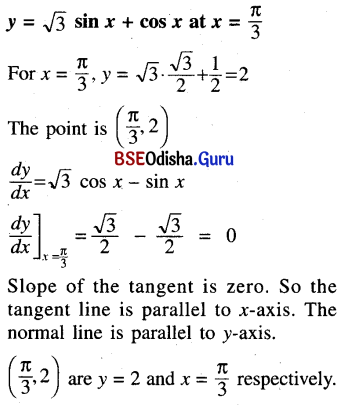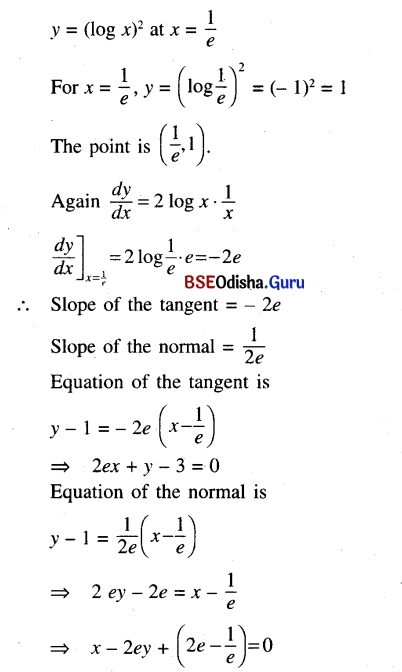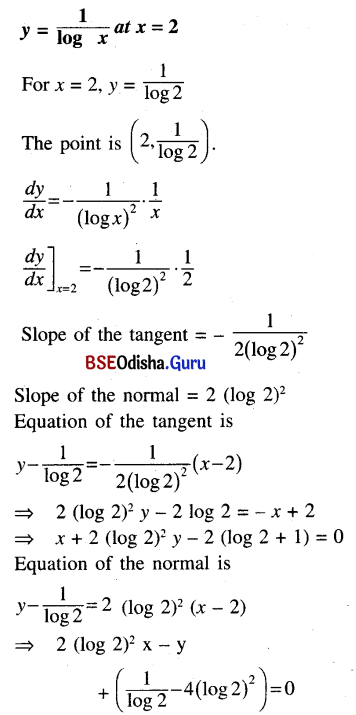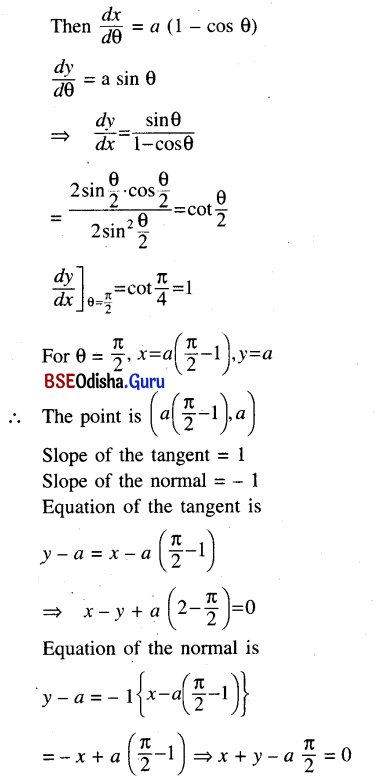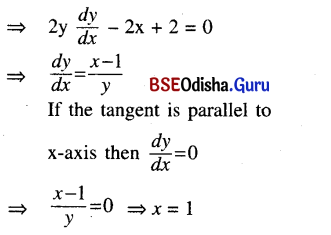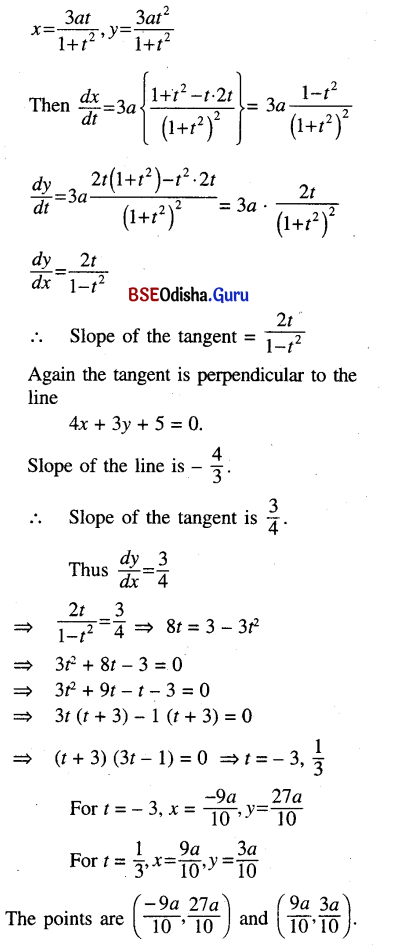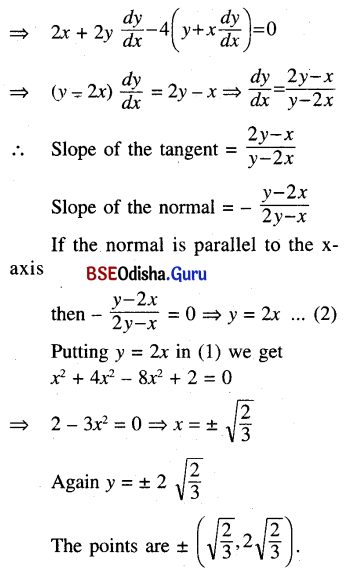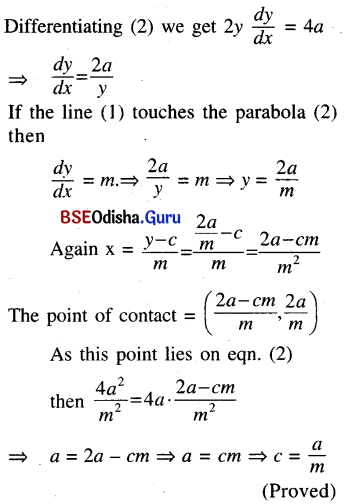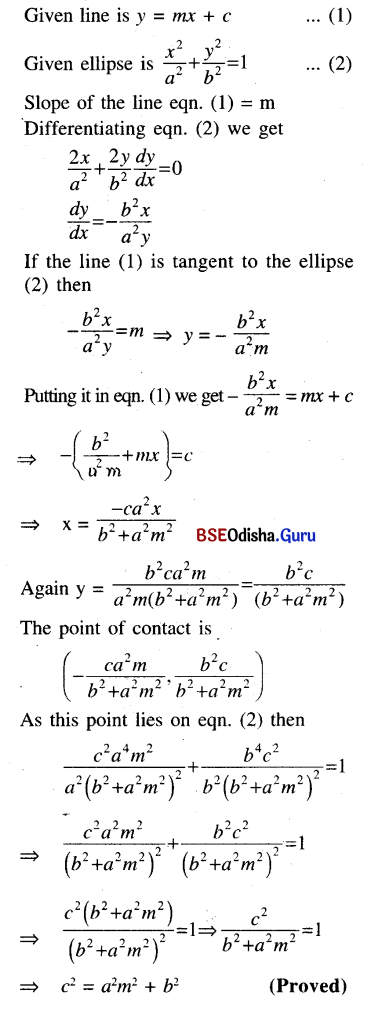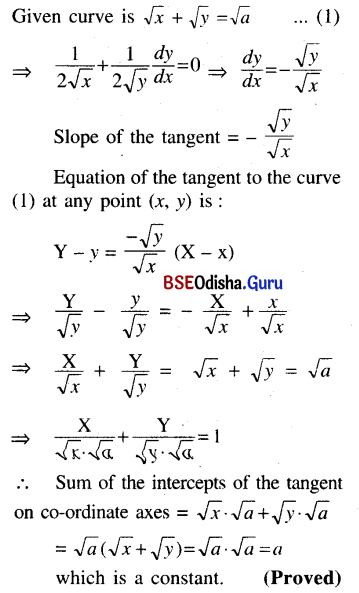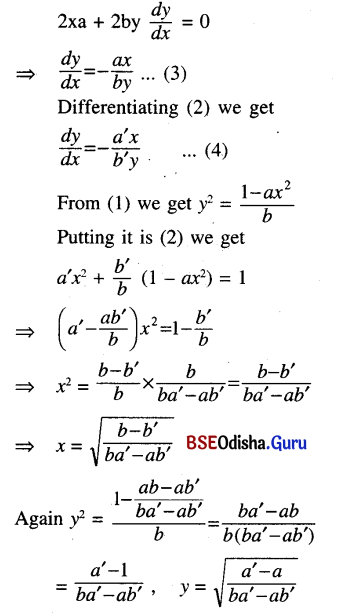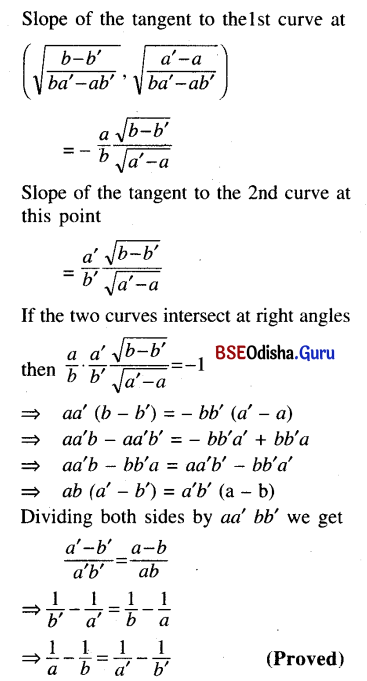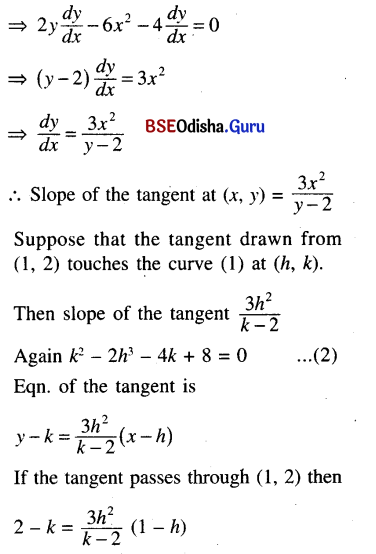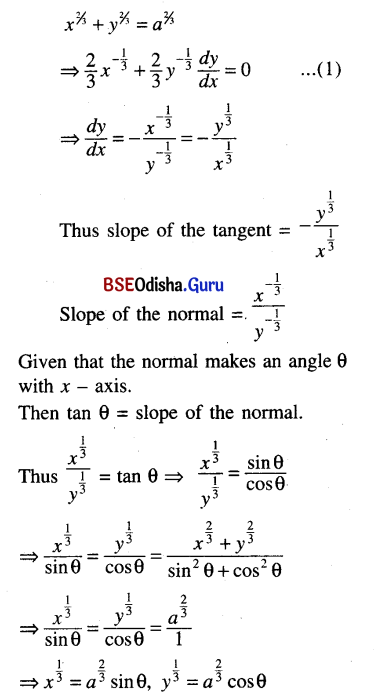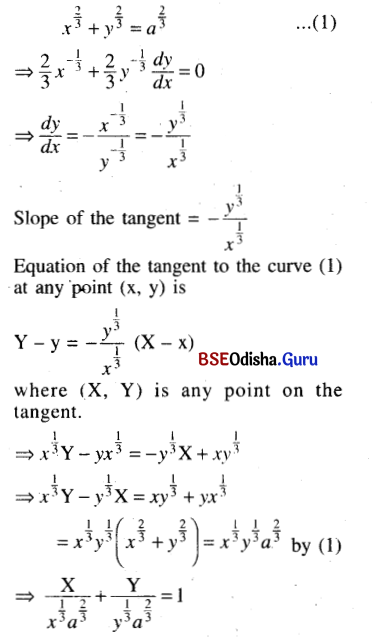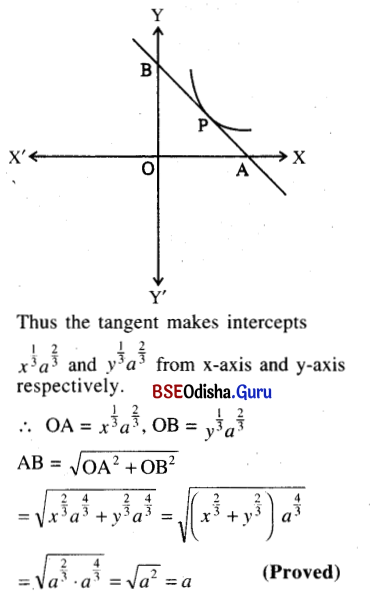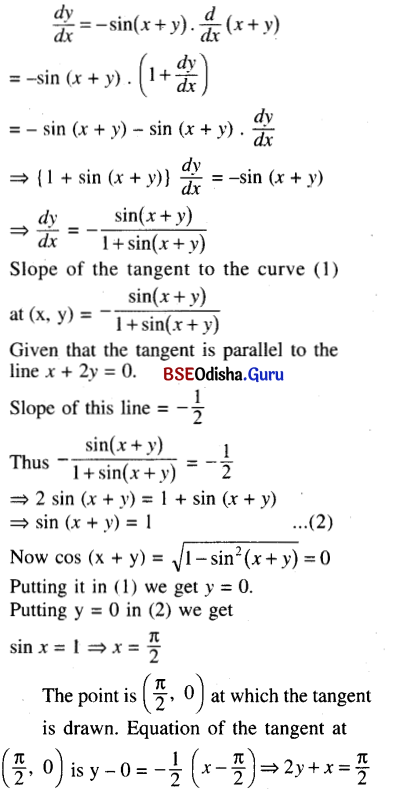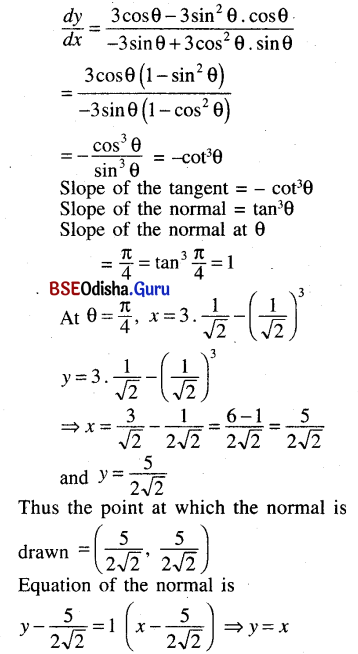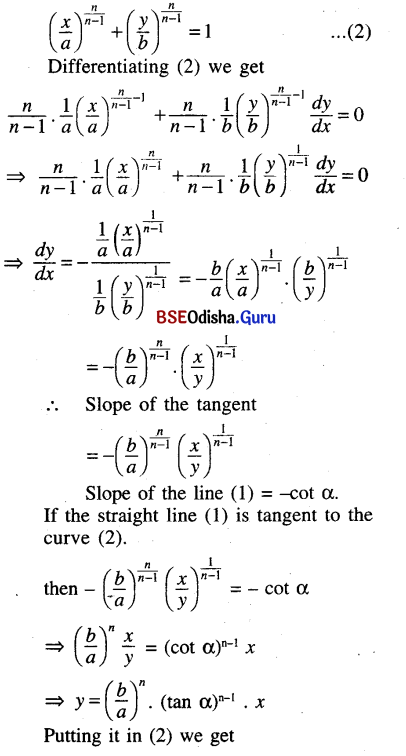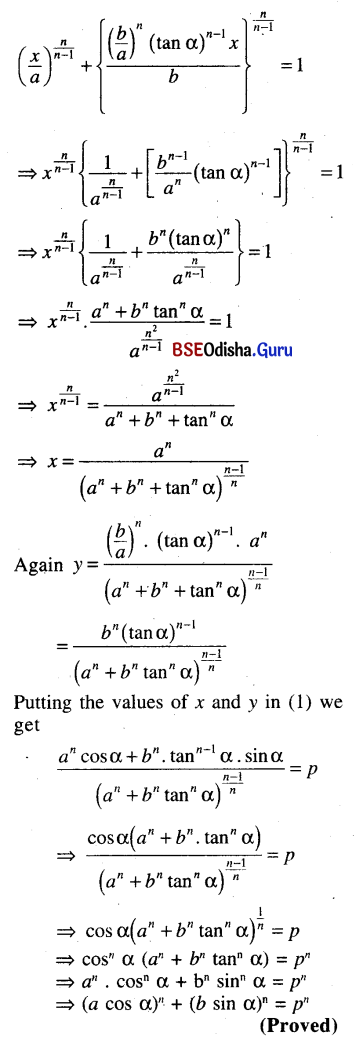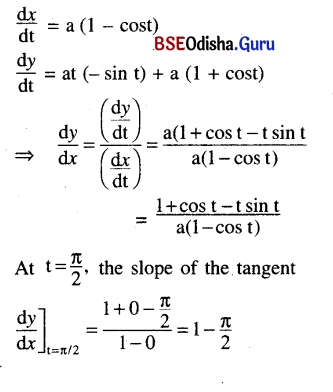Odisha State Board BSE Odisha 10th Class Hindi Solutions Chapter 1 मधुर भाषण Textbook Exercise Questions and Answers.
BSE Odisha Class 10 Hindi Solutions Chapter 1 मधुर भाषण
प्रश्न और अभ्यास (ପ୍ରଶ୍ନ ଔର୍ ଅଭ୍ୟାସ)
1. निम्नलिखित प्रश्नों के उत्तर दो-तीन वाक्यों में दीजिए:
(ନିମ୍ନଲିଖୂ ପ୍ରଶ୍ନୋ କେ ଉତ୍ତର୍ ଦୋ-ତୀନ୍ ବାର୍କୋ ମେଁ ଦୀଜିଏ : )
(ତଳଲିଖ ପ୍ରଶ୍ନଗୁଡ଼ିକର ଉତ୍ତର ଦୁଇ-ତିନୋଟି ବାକ୍ୟରେ ଉତ୍ତର ଦିଅ : )
(क) भाषा के द्वारा मनुष्य ने किस प्रकार की उन्नति की है?
(ଭାଷା କେ ଦ୍ଵାରା ମନୁଷ୍ୟ ନେ କିସ୍ ପ୍ରକାର୍ କୀ ଉନ୍ନତି କୀ ହୈ ?)
उत्तर:
भाषा के कारण ही मनुष्य उतनी उन्नति कर सका है, जानवरों के पास कोई भाषा न होने के कारण वह जहाँ का तहाँ बना हुआ है। किन्तु मनुष्य दिन प्रतिदिन उन्नति करता चला आया है। अन्य जानवरों की अपक्षा मनुष्य भौतिक लमें न्यून होता हुआ भी अपनी बुद्धि और भाषा के सहारे अधिक सबल हो गया है। भाषा के द्वारा मनुष्य पेच महाभूतो को अपने वश में कर लिया है। भाषा द्वारा हमारे ज्ञान और अनुभव की रक्षा होती है।
(ख) मधुर भाषण किसे कहते हैं?
(ମଧୁର୍ ଭାଷଣ୍ କିସେ କହତେ ହୈ ?)
उत्तर:
जो वस्तु या बातचीत मनोनुकूल होती है, जिससे चित्त दूषित होता है, वही मधुर कहलाती माधुर्य भाषा का भी गुण है। चित्त को पिधलाने वाला जो आनंद होता है उसे माधुर्य कहते हैं। मधुर भाषण हृदयद्वार के खोलने की कुंजी है। वचनों की मधुरता और आकर्षण पूरन के तत्वाकर्षण और चुंबक के आकर्षण से भी बढ़कर है।
(ग) बाणभट्ट ने अपने छोटे लड़के को पुस्तक पूरी करने के लिए क्यों कहा?
(ବାଣଭଟ୍ଟ ନେ ଅପ୍ନେ ଛୋଟେ ଲଡ଼କେ କୋ ପୁସ୍ତକ୍ ପୂରୀ କର୍ନେ କେ ଲିଏ ଜ୍ୟୋ କହା ?)
उत्तर:
बाणभट्ट ने अपने छोटे लड़के को पुस्तक पुरी करने के लिए इसलिए कहा क्योंकि पुस्तक को साहित्यिक भाषा में लिखने की योग्यता केवल उसमें ही थी। यह बात तब साबित होती है जब बाणभट्ट ने अपने दोनों पुत्रों को बुलाकर एक सुखे हुए वृक्ष को किस प्रकार अपनी भाषा में व्यक्त करोगे इसके बारे में पूछा। जिसे अति सुंदर और प्रभावशाली भाषा में छोटे लड़के ने समझा दिया। इसलिए भाव को प्रभावशाली भाषा में व्यक्त कर देना ही साहित्य है।
(घ) किन-किन गुणों के कारण मनुष्य आदरभाजन बनता है?
उत्तर:
(କିନ୍-କିନ୍ ଗୁରୌ କେ କାରଣ ମନୁଷ୍ୟ ଆଦରଭାଜନ ବନତା ହୈ ?)
वार्तालाप की शिष्टता मनुष्य को आदर का भाजन बनाती है और समाज से उसकी सफलता के लिए रास्ता साफ कर देती है। मनुष्य की पोशाक और चालढाल सीधे समाज पर प्रभाव डालती है। सामाजिक व्यवहार के लिए विचारों का आदान-प्रदान आवश्यक है और भाषा की सार्थकता इसी में है कि वह दूसरों पर यथेष्ट प्रभाव डाल सके।
(ङ) मधुर वचन और कटु वचन बोलनेवालों को क्या मिलता है?
(ମଧୁର୍ ଚନ୍ ଔର୍ କଟୁ ଵଚନ୍ ବୋଲନେୱାର୍ଲୋ କୋ କ୍ୟା ମିଲ୍ ହୈ ?)
उत्तर:
मधुर वचन ही विश्वास अत्पन्न कर भय और आतंक का परिभार्जन कर देते हैं। कटु भाषीलोगों से लोग हृदय खोलकर बात करने में अन्त हैं। जबकि कटुवचन आदमी को स्पष्ट कर सकते हैं तो मधुर वचन दूसरे को प्रसन्न भी कर सकते हैं। शब्दों को जादू बड़ा जबर्दस्त होता है। वही एक कटुवचन सोर किए – धरे पर पानी फेर सकता है। मधुर भाषण द्वारा मनुष्य की शिक्षा – दीक्षा और कुल की परंपरा और मर्यदा का परिचय मिलता है।
(च) किसी काम को करने के लिए सज्जन का पहला कर्त्तव्य क्या है?
(କିସୀ କାମ୍ କୋ କର୍ନେ କେ ଲିଏ ସଜନ କା ପହଲା କର୍ତ୍ତବ୍ୟ କ୍ୟା ହୈ ?)
उत्तर:
किसी काम को करने के लिए सज्जन का पहला कर्त्तव्य है यह कि अपने से कम स्थिति के लोगों के स्वाभिमान की रक्षा करना। जो काम करना है उसको प्रसन्नता से करना चाहिए और उसके संबंध में कोई ऐसे शब्द भी न कहने चाहिए जिनसे प्रकट हो कि यह काम नाखुशी से किया जा रहा है या उस काम के करने से दूसरे के साथ एहसान किया जा रहा है।
(छ) वातीलाप में व्यापारिक बातचीत और निजी बातचीत में क्या अंतर है?
(ବାର୍ତ୍ତାଳାପ୍ ମେଁ ବ୍ୟାପରୀକ୍ ବାତ୍ତ୍ ଔର୍ ନିଜୀ ବାତ୍ତ୍ ମେଁ କ୍ୟା ଅନ୍ତର୍ ହୈ ?)
उत्तर:
व्यापारिक बातचीत जाब्ते की बातचीत होनी चाहिए जबकि निजी बातचीत में खुलापन होना चाहिए। व्यापारिक बातचीत अशिष्ट नहीं होती चाहिए। वह नपी तुली हो सकती है। निजी संबंध की बातचीत में अत्मीयता का अभाव न रहना चाहिए और थोड़ा सा कष्ट उठाकर बात को पूरी तौर से समझा देना अपना कर्त्तव्य होता है।
![]()
2. निम्नलिखित प्रश्नों के उत्तर एक या दो वाक्यों में दीजिए:
(ନିମ୍ନଲିଖ୍ ପ୍ରଶ୍ନୋ କେ ଉତ୍ତର୍ ଏକ ଯା ଦୋ ୱାର୍କୋ ମେଁ ଦୀଜିଏ : )
(ନିମ୍ନଲିଖ ପ୍ରଶ୍ନଗୁଡ଼ିକର ଉତ୍ତର ଗୋଟିଏ-ଦୁଇଟି ବାକ୍ୟରେ ଦିଅ : )
(क) मनुष्य की सामाजिकता किसके द्वारा कायम रहती है?
(ମନୁଷ୍ୟ କୀ ସାମାଜିକତା କିସ୍ ଦ୍ଵାରା କାୟମ୍ ରହତୀ ହୈ ?)
उत्तर:
मनुष्य की सामाजिकता भाषा के द्वारा कायम रहती है।
(ख) कैसा शब्द दो रूठों को मिला देता है और कैसा शब्द दो मित्रों के मन में वैमनस्य उत्पन्न कर देता है?
(କୈସା ଶବ୍ଦ ଦୋ ରୁର୍ଡୋ କୋ ମିଲା ଦେତା ହୈ ଔର୍ କୈସା ଶବ୍ଦ ଦୋ ମିସ୍ଟ୍ରୋ କେ ମନ୍ ମେଁ ବୈମନଷ୍ୟ ଉତ୍ପନ୍ନ କର୍ ଦେତା ହୈ ?)
उत्तर:
मधुर शब्द दो रूठों को मिला देता है और कटु शब्द दो मित्रों के मन में वैमनस्य उत्पन्न कर देता है।
(ग) बाणभट्ट की कौन-सी किताब अधूरी रह गयी थी?
(ବାଣଭଟ୍ଟ କୀ କୌନ୍-ସୀ କିତାବ୍ ଅଧୂରୀ ରହ୍ ଗୟୀ ଥୀ?)
उत्तर:
बाणभट्ट की ‘कादंबरी’ अधूरी रह गयी थी।
(घ) बार्तालाप की शिष्टता से हमें क्या लाभ मिलता है?
उत्तर:
(ବାର୍ତ୍ତାଳାପ୍ କୀ ଶିଷ୍ଟତା ସେ ହର୍ମେ କ୍ୟା ଲାଭ ମିତା ହୈ ? )
वार्तालाप की शिष्टता से हम आदर भाजन बनते हैं। समाज में हमारी सफलता के लिए रास्ता साफ हो जाता है।
(ङ) कथनी और करनी में साम्य क्यों आवश्यक है?
(କଥନୀ ଔର୍ କରନୀ ମେଁ ସାମ୍ୟ ବ୍ୟୋ ଆବଶ୍ୟକ୍ ହୈ ?)
उत्तर:
मधुर भाषी के लिए कथनी और करनी में साम्य आवश्यक है क्योंकि कर्म के लिए वचन पहली सीढ़ी है।
(च) मनुष्य कब वंद्य बनता है?
उत्तर:
वचन के अनुकूल कर्म करने पर मनुष्य वंद्य बनता है। मन, वाणी और कर्म का सामंजस्य ही मनुष्य को श्रेष्ठता के पद पहुँचाता है।
3. निम्नलिखित प्रश्नों के उत्तर एक शब्द या एक वाक्य में दीजिए :
(ନିମ୍ନଲିଖୂ ପ୍ରଶ୍ନୋ କେ ଉତ୍ତର୍ ଏକ୍ ଶବ୍ଦ ୟା ଏକ୍ ୱାକ୍ୟ ମେଁ ଦୀଜିଏ : )
(ନିମ୍ନଲିଖ ପ୍ରଶ୍ନଗୁଡ଼ିକର ଉତ୍ତର ଗୋଟିଏ ଶବ୍ଦ ବା ଗୋଟିଏ ବାକ୍ୟରେ ଦିଅ : )
(क) भाषा द्वारा किसकी रक्षा होती है?
(ଭାଷା ଦ୍ବାରା କିସ୍ ରକ୍ଷା ହୋତୀ ହୈ ?)
उत्तर:
भाषा द्वारा हमारे ज्ञान और अनुभव की रक्षा होती है।
(ख) ‘मधुर भाषण’ निबंध के लेखक कौन हैं ?
(‘ମଧୁର୍ ଭାଷଣ୍’ ନିବନ୍ଦ୍ କେ ଲେଖକ୍ କୌନ୍ ହେଁ ?)
उत्तर:
‘मधुर भाषण’ निबन्ध के लेखक गुलाब राय हैं।
(ग) कौन मनुष्य को आदर भाजन बनाती है?
(କୌନ୍ ମନୁଷ୍ୟ କୋ ଆଦର୍ ଭାଜନ୍ ବନାତୀ ହୈ ?)
उत्तर:
वातीलाप की शिष्टता
(घ) मधुर भाषी के लिए किसमें साम्य रखने की आवश्यकता है?
(ମଧୁର ଭାଷୀ କେ ଲିଏ କିସ୍ ସାମ୍ୟ ରଖ୍ କୀ ଆଶ୍ୟକତା ହୈ ?)
उत्तर:
मधुर भाषी के लिए कथनी और करनी में साम्य रखने की आवश्यकता है।
(ङ) किन-किन का सामंजस्य मनुष्यता को श्रेष्ठता के पद पर पहुँचाता है?
(କିନ୍-କିନ୍ କା ସାମଞ୍ଜସ୍ୟ ମନୁଷ୍ୟତା କୋ ଶ୍ରେଷ୍ଠତା କେ ପଦ୍ ପର୍ ପହୁଁଚାତା ହୈ ?)
उत्तर:
मन, वाणी और कर्म
(च) किन-किन का योग नहीं हो सकता?
(କିନ୍-କିନ୍ କା ୟୋଗ ନହୀ ହୋ ସକ୍ତା ?)
उत्तर:
हृदय की मलिनता और मधुर वचनों का योग नहीं हो सकता।
(छ) किसकी दो लातें भी सहन की जाती हैं?
(କିସ୍ ଦୋ ଲାହେଁ ଭୀ ସହନ୍ କୀ ଜାତୀ ହୈ ?)
उ – दूधारू गाय
(ज) शिष्टता क्या है?
(ଶିଷ୍ଟତା କ୍ୟା ହୈ ?)
उत्तर:
वाणी में मधुरता के साथ विनयपूर्ण व्यवहार ही शिष्टता है।
(झ) किसकी रक्षा सज्जन का पहला कर्त्तव्य है?
(କିସକୀ ରକ୍ଷା ସଜ୍ଜନତା କା ପହଲା କର୍ତ୍ତବ୍ୟ ହୈ ?)
उत्तर:
लोगों के स्वाभिमान की रक्षा सज्जन का पहला कर्त्तव्य है।
(ञ) निजी संबंध की बातचीत में किसका अभाव न रहना चाहिए?
(ନିଜୀ ସମ୍ବନ୍ଧ କୀ ବାତ୍ରୀତ୍ ମେଁ କିସ୍ ଅଭା ନ ରହନା ଚାହିଏ ?)
उत्तर:
आत्मीयता
भाषा-ज्ञान (ଭାଷା-ଜ୍ଞାନ)
1. निम्नलिखित में से विशेषण शब्दों को चुनकर लिखिए:
(ନିମ୍ନଲିଖତ୍ ମେଁ ସେ ବିଶେଷଣ ଶବ୍ଦ କୋ ଚୁନ୍କର୍ ଲିଗ୍ : )
(ନିମ୍ନଲିଖ ମଧ୍ୟରୁ ବିଶେଷଣ ଶବ୍ଦଗୁଡ଼ିକୁ ବାଛି କରି ଲେଖ : )
विश्वास, भौतिक, पटु, माधुर्य, वचन, शिष्टता, प्रसन्नता, व्यापारिक, सौद्धान्तिक, मर्यादा, अभिमान।
उत्तर:
भौतिक, व्यापारिक, सौद्धान्तिक, पटु।
![]()
2. निम्नलिखित शब्दों के लिंग बताइए:
(ନିମ୍ନଲିଖ୍ ଶବ୍ଦା କେ ଲିଙ୍ଗ୍ ବତାଇଏ : )
(ନିମ୍ନଲିଖ୍ ଶବ୍ଦଗୁଡ଼ିକର ଲିଙ୍ଗ ନିରୂପଣ କର ।)
गंध, भाव, कर्त्तव्य, परंपरा, भाषा, भाषण, वचन, वाणी, साहित्य, उन्नति।
गंध – स्रीलिंग
कर्तव्य – पुंलिंग
भाषा – स्रीलिंग
वचन – पुंलिंग
साहित्य – पुंलिंग
भाव – पुलिंग
परपरा – स्रीलिंग
भाषण – पुलिंग
वाणी – स्रीलिंग
उन्नति – स्रीलिंग
3. निम्नलिखित के पर्यायवाची शब्द लिखिए:
(ନିମ୍ନଲିଖ୍ କେ ପର୍ଯ୍ୟାୟୱାଚୀ ଶବ୍ଦ ଲିଗ୍ : )
(ନିମ୍ନଲିଖତ ଶବ୍ଦସବୁର ପର୍ଯ୍ୟାୟବାଚୀ ଶବ୍ଦ ଲେଖ ।)
मनुष्य, चित्र, पुस्तक, मधुर, कटु, आनंद
उत्तर:
मनुष्य मानव
पुस्तक – किताब/ग्रंथ
कटु – कड़वा/कर्कश
चित्र – तस्वीर/फोटो
मधुर – मीठा
आनंद – खुशी/प्रसन्न
4. निम्नलिखित शब्दों के विलोम रूप लिखिए:
(ନିମ୍ନଲିଖତ୍ ଶବ୍ଦା କେ ବିଲୋମ୍ ରୂପ୍ ଲିଗ୍ : )
(ନିମ୍ନଲିଖତ ଶବ୍ଦଗୁଡ଼ିକର ବିପରୀତ ଶବ୍ଦ ଲେଖ : )
ज्ञान, उन्नति, सच्चा, मधुर, आनंद, मित्र, बड़ा
उत्तर:
ज्ञान – अज्ञान
सच्चा – झूठा
आनंद – निरांनद
बड़ा – छोटा
5. निम्नलिखित शब्दों के प्रयोग से एक-एक वाक्य बनाइए:
(ନିମ୍ନଲିଖତ୍ ଶବ୍ଦା କେ ପ୍ରୟୋଗ ସେ ଏକ୍-ଏକ୍ ୱାକ୍ୟ ବନାଇଏ : )
(ନିମ୍ନଲିଖ୍ ଶବ୍ଦଗୁଡ଼ିକୁ ପ୍ରୟୋଗ କରି ଗୋଟିଏ ଗୋଟିଏ ବାକ୍ୟ ଗଢ଼ : )
वचन, भाषण, चाल-ढाल, आदान-प्रदान, सामंजस्य, इनकार, आत्मीयता मधुर वचन दूसरों को प्रसन्न कर सकता है।
उत्तर:
वचन – मधुर वचन दूसरों को प्रसन्न कर सकता है।
भाषण – हिमांशु अच्छा भाषण दे रहा है।
चाल-ढाल- तुम्हारी चाल-ढाल ठीक नहीं लगती।
आदान-प्रदान-सामाजिक व्यवहार के लिए विचारों का आदान-प्रदान आवश्यक है।
सामंजस्य- हृदय की मालिनता और मधुर वचन में कोई सामंजस्य नहीं होता।
इनकार – अर्चना ने सोनाली को किताब देने से इनकार कर दिया।
आत्मीयता – राकेश की बातों में आत्मीयता की झलक देखने को मिलती है।
![]()
6. निम्नलिखित वाक्यों को शुद्ध करके लिखिए
(ନିମ୍ନଲିଖ୍ ୱାର୍କୋ କୋ ଶୁଦ୍ଧ କର୍କେ ଲିଗ୍ : )
(ନିମ୍ନଲିଖିତ ବାକ୍ୟଗୁଡ଼ିକୁ ଶୁଦ୍ଧ କରି ଲେଖ ।)
(क) भाषा मनुष्य के विशेष अधिकार है।
उत्तर:
भाषा पर मनुष्य का विशेष अधिकार है।
(ख) हृदय का मलीनता और मधुर वचनो में योग नहीं हो सकता।
उत्तर:
हृदय की मलिनता और मधुर वचनों में योग नहीं हो सकता।
(ग) कटुभाषी लोगों में लोग हृदय खोलकर बात करने में डरते हैं।
उत्तर:
कटुभाषी लोगों से लोग हृदय खोलकर बात करने में डरती हैं।
(घ) भाव को प्रभावशाली भाषा के व्यक्त कर देना ही साहित्य है।
उत्तर:
भाव को प्रभावशाली भाषा में व्यक्त कर देना ही साहित्य है।
(ङ) मधुर वचन दूसरे में प्रसन्न भी कर सकते हैं।
उत्तर:
मधुर वचन दूसरों को प्रसन्न भी कर सकते हैं।
7. ‘ता’ प्रत्यय लगाकर शब्द बनाइए:
(‘ତା’ ପ୍ରତ୍ୟୟ ଲଗାକର୍ ଶବ୍ଦ ବନାଇଏ : )
(‘ତା’ ପ୍ରତ୍ୟୟ ଲଗାଇ ଶବ୍ଦ ଗଢ଼ : )
सामाजिक, मनुष्य, प्रसन्न, अशिष्ट, मलीन
उत्तर:
सामाजिक + ता = सामाजिकता
प्रसन्न + ता = प्रसन्नता
मलीन + ता = मलीनता
मनुष्य + ता = मनुष्यता
अशिष्ट + ता = अशिष्टता
8. ‘इक’ प्रत्यय लगाकर शब्द बनाइए :
(‘ଇକ’ ପ୍ରତ୍ୟୟ ଲଗାକର୍ ଶବ୍ଦ ବନାଇଏ : )
(‘ଇକ୍’ ପ୍ରତ୍ୟୟ ଲଗାଇ ଶବ୍ଦ ଗଢ଼ : )
विचार, नीति, इतिहास, भूत, समाज, साहित्य, सिद्धांत, व्यापार
उत्तर:
विचार + इक = वैचारिक
इतिहास + इक = ऐतिहासिक
समाज + इक = सामाजिक
सिद्धांत + इक = सौद्धातिक
नीति + इक = नैतिक
भूत + इक = भौतिक
साहित्य + इक = साहित्यिक
व्यापार + इक = व्यापारिक
निम्नलिखित वाक्यों को याद रखिए :
(ନିମ୍ନଲିଖତ୍ ୱାର୍କୋ କୋ ୟାଦ୍ ରଖୁ ;
(ନିମ୍ନଲିଖୂତ ବାକ୍ୟଗୁଡ଼ିକୁ ମନେରଖ : )
(क) वाणी और कर्म में सामंजस्य ही मनुष्य को श्रेष्ठता के पद पर पहुँचाता है।
(ख) मधुरभाषी के लिए कथनी और करनी का साम्य आवश्यक है।
(ग) चित्त को पिघलानेवाला जो आनंद होता है, उसे ‘माधुर्य’ कहते हैं।
(घ) वार्तालाप की शिष्ठता मनुष्य को आदर भाजन बनाती है।
योग्यता विस्तार: (ଯୋଗ୍ୟତା ବିସ୍ତାର : )
(क) कक्षा में ‘मधुर’ भाषण का एक कार्यक्रम आयोजित कीजिए।
(ଶ୍ରେଣୀରେ ‘ମଧୁର’ ଭାଷଣର ଏକ କାର୍ଯ୍ୟକ୍ରମ ଆୟୋଜିତ କର ।)
(ख) अपनी योग्यता बढ़ाने के लिए ऊपर छाँटकर दिए गए मधुर वाक्यों को याद रखिए और अपने भाषण को सरस बनाने के लिए इसका उपयोग कीजिए।
(ନିଜର ଯୋଗ୍ୟତା ବୃଦ୍ଧି ପାଇଁ ଉପର ଲିଖ୍ ମଧୁର ବାକ୍ୟଗୁଡ଼ିକୁ ମନେରଖ ଏବଂ ନିଜର ଭାଷଣକୁ ସରସ କରିବାପାଇଁ ଏହାର ଉପଯୋଗ କର ।)
Very Short & Objective Type Questions with Answers
A. निम्नलिखित प्रश्नों के उत्तर एक वाक्य में दीजिए।
प्रश्न 1.
मधुर भाषण किसे कहते है?
उत्तर:
जिस वात को सुनने से हृदय को द्रवित करने वाला आनन्द प्राप्त होता है उसे मधुर भाषण कहते है।
प्रश्न 2.
मधुर भाषण से मनुष्य का कैसा परिचय मिलता है?
उत्तर:
मधुर भाषण से मनुष्य की शिक्षा-दीक्षा, कुल परंपरा और मर्यादा का परिचय मिलता है।
प्रश्न 3.
इनकार में किसकी गंध नहीं आनी चाहिए?
उत्तर:
इनकार में अधिकार और अभिमान की गन्ध नहीं आनी चाहिए।
प्रश्न 4.
वातीलाप की शिष्टता से हमें क्या लाभ मिलता है?
उत्तर:
वार्तालाप की शिष्टता से हम आदर भाजन बनते और समाज में हमारे सफलता के लिए रास्ता साफ हो जाता है।
![]()
प्रश्न 5.
कथनी और करनी में साम्य क्यों आवश्यक है?
उत्तर:
मधुर भाषी के लिए कथनी और करनी में साम्य आवश्यक है क्योंकि कर्म की लिए वचन पहली सीढ़ी है।
प्रश्न 6.
मनुष्य कब बंद्य बनता है?
उत्तर:
वचन के अनुकूल कर्म करने पर मनुष्य बंद्य बनता है। मन, बाणी और कर्म का सामंजस्य ही मनुष्य को श्रेष्ठता के पर पहुँचाता है।
प्रश्न 7.
भाषा द्वारा किसकी रक्षा होती है?
उत्तर:
भाषा द्वारा हमारे ज्ञान और अनुभव की रक्षा होती है।
B. निम्नलिखित प्रश्नों के उत्तर एक शब्द / एक पद में दीजिए।
प्रश्न 1.
मधुर वचन के पीछे क्या होना जरुरी है?
उत्तर:
टकसाली भाव
प्रश्न 2.
गलत फहमी दूर करके रूठे हुए मित्र को मनानेवाला मनुष्य कैसा होता है?
उत्तर:
सच्चा साहित्यिक
प्रश्न 2.
हृदय द्वार खोलने क्या है?
उत्तर:
वचनों का माधुर्य
प्रश्न 3.
वार्तालाप की शिष्टता मनुष्य को क्या बनाती है?
उत्तर:
आदर का भाजन
![]()
प्रश्न 4.
किस पर मनुष्य का विशेष अधिकार है?
उत्तर:
भाषा पर
प्रश्न 5.
किसके कारण मनुष्य इतनी उन्नति कर सका है?
उत्तर:
भाषा के कारण
प्रश्न 6.
चित्त को पिघलानेवाला जो आनंद होता है, उसे क्या कहते हैं?
उत्तर:
माधुर्य
प्रश्न 7.
गलत फहमी दूर करके रूठे हुए मित्र को मनानेवाला मनुष्य कैसा होता है?
उत्तर:
सच्वा साहित्यिक
प्रश्न 8.
कर्म के लिए पहली सीढ़ी क्या है?
उत्तर:
वचन
प्रश्न 9.
मनुष्य ने किसे अपने वश में कर लिया है?
उत्तर:
पंच महाभूतों को
![]()
प्रश्न 10.
बाणभट्ट की कादम्बरी को किसने पूरा किया?
उत्तर:
छोटे लड़के ने
प्रश्न 11.
‘जड़ चेतन गुन- दोषमय बिस्व कीन्ह करतार’ – यह किसने लिखा है?
उत्तर:
तुलसीदास
प्रश्न 12.
भाषा द्वारा कौन-सा बल प्राप्त होता है?
उत्तर:
सहकारिता का
प्रश्न 13.
भाषा द्वारा किसकी रक्षा होती है?
उत्तर:
ज्ञान और अनुभव
प्रश्न 14.
‘मधुर भाषण’ निबंध के लेखक कौन है?
उत्तर:
गुलाबराय
![]()
प्रश्न 15.
किसकी दो लातें भी सहन की जाती हैं?
उत्तर:
दूधारू गाय
प्रश्न 16.
मनुष्य कब वंद्य बनता है?
उत्तर:
वचन के अनुकूल कर्म करने पर
प्रश्न 17.
मनुष्य की पोशाक और चाल-ढाल का प्रभाव किस पर पड़ा?
उत्तर:
समाज
प्रश्न 18.
इनकार कैसे करना चाहिए?
उत्तर:
शिष्टता स
प्रश्न 19.
मन, कर्म, वाणी में साम्य होने से मनुष्य कहाँ पहुँच सकता है?
उत्तर:
श्रेष्ठता के पद पर
प्रश्न 20.
मनुष्य की सामाजिकता किसकी द्वारा कायम रहती है।
उत्तर:
भाषाद्वारा
C. रिक्त स्थानों की पूर्ति कीजिए।
प्रश्न 1.
वाणभट्ट की पुस्तक का नाम ………………. था।
उत्तर:
कादंबरी
प्रश्न 2.
इनकार करते समय ……………… प्रकट करना शिष्टाचार की माँग है।
उत्तर:
खेद
प्रश्न 3.
निजी संबंध की बातचीत में ………………… का भाव रहना चाहिए।
उत्तर:
आत्मीयता
प्रश्न 4.
………………………… बात-चीत नपीतुली हो सकती है।
उत्तर:
व्यापारिक
प्रश्न 5.
………………….. भाषा भय और आतंक का परिमार्जन कर देती है?
उत्तर:
मधुर
![]()
प्रश्न 6.
हुदय की मलिनता ………………….. के साथ संयोग नहीं हो सकता।
उत्तर:
मधुर वचनों
प्रश्न 7.
…………………… मनुष्य का कुल-परंपरा का परिचय मिलता है।
उत्तर:
मधुर भाषण से
प्रश्न 8.
वाणी की मधुरता के साथ विनयपूर्ण व्यवहार को …………………… कहते हैं।
उत्तर: शिष्टाचार
प्रश्न 9.
भाव को प्रभावशाली भाषा में व्यक्त करना ही …………………… है ।
उत्तर:
साहित्य
प्रश्न 10.
भाषा की सार्थकता दूसरों पर ………………… है।
उत्तर:
प्रभाव डालने में
प्रश्न 11.
काम हो जाने के बाद ………………….. कहना चाहिए।
उत्तर:
धन्यवाद
प्रश्न 12.
मधुर वचन दूसरों को ………………….. करते हैं।
उत्तर:
प्रसन्न
प्रश्न 13.
मनुष्य ने ………………….. को अपने वश में कर लिया है।
उत्तर:
प्रसन्न
![]()
प्रश्न 14.
भाषा से हमारे …………………. और अनुभव की रक्षा होती है।
उत्तर:
ज्ञान
प्रश्न 15.
जो वाणी सुनने में मधुर लगती है, उसका परिणाम ………………….. होता है।
उत्तर:
हितकर
D. ठिक् या भूल लिखिए।
प्रश्न 1.
लोगों के जीवन रक्षा सज्जन का पहला कर्त्तव्य है।
उत्तर:
भूल
प्रश्न 2.
कटु शब्द दो मित्रों के मन में वैमनस्य उत्पन्न कर देता हैं।
उत्तर:
ठिक्
प्रश्न 3.
भाषा द्वारा हमारे ज्ञान और अनुभव की रक्षा होती है।
उत्तर:
ठिक्
प्रश्न 4.
निजी संबंध की बातचीत्त में एकाग्रता न रहना चाहिए।
उत्तर:
भूल
प्रश्न 5.
मनुष्य का भाषा पर विशेष अधिकार है।
उत्तर:
ठिक्
प्रश्न 6.
दो रूठों को कठोर शब्द से मिलाया जा सकता है।
उत्तर:
भूल
प्रश्न 7.
मिष्टभाषी लोगों से हृदय खोलकर बात करने से सब डरते हैं।
उत्तर:
भूल
![]()
प्रश्न 8.
मधुर वचन दूसरों को प्रसन्न करते हैं।
उत्तर:
ठिक्
प्रश्न 9.
चुंबक और वचन में से चुंबक का आकर्षण अधिक है।
उत्तर:
भूल
प्रश्न 10.
मन-वचन-कर्म मे से वचन का विशेष महत्व है?
उत्तर:
ठिक्
Multiple Choice Questions (mcqs) with Answers
सही उत्तर चुनिए : (MCQs)
1. मधुर वचन के पीछे क्या होना जरुरी है?
(A) टकसाली भाव
(B) सुंदर नाम
(C) विश्वास का नाव
(D) चतुर दाँव
उत्तर:
(A) टकसाली भाव
2: वाणभट्ट की पुस्तक का नाम था।
(A) कादंबरी
(B) रघुवंश
(C) रामचरित
(D) चन्द्रवली
उत्तर:
(A) कादंबरी
3. हृदय – द्वार खोलने की कुंजी है:
(A) वचनों का माधुर्य
(B) वचनों की कठोरता
(C) वचनों में लचीलापन
(D) शुष्क वचन
उत्तर:
(A) वचनों का माधुर्य
![]()
4. इनकार करते समय प्रकट करना शिष्टाचार की माँग है।
(A) मजबूरी
(B) खेद
(C) आत्मीयता
(D) कष्ट
उत्तर:
(B) खेद
5. वार्तालाप की शिष्टता मनुष्य को क्या बनाती है?
(A) मन का साजन
(B) फूस का छाजन
(C) आदर का भाजन
(D) मधुर भोजन
उत्तर:
(C) आदर का भाजन
6. किस पर मनुष्य का विशेष अधिकार है?
(A) भाषा पर
(B) जानवरों पर
(C) वुद्धि पर
(D) बल के कारण
उत्तर:
(A) भाषा पर
7. किसके कारण मनुष्य इतनी उन्नति कर सका है?
(A) भाषा के कारण
(B) आनंद के कारण
(C) सुख के कारण
(D) बल के कारण
उत्तर:
(A) भाषा के कारण
8. चित्त को पिघलानेवाला जो आनंद होता है, उसे क्या कहते हैं ?
(A) सौंदर्य
(B) ऐश्वर्य
(C) कारूकार्य
(D) माधुर्य
उत्तर:
(D) माधुर्य
9. गलत कहमी दूर करके रूठे हुए मित्र को मनानेवाला मनुष्य कैसा होता है?
(A) सच्चा साहित्यिक
(B) उदार व्यक्ति
(C) सच्चा इन्सान
(D) महापुरुष
उत्तर:
(A) सच्चा साहित्यिक
10. निजी संबंध की बातचीत में
(A) आत्मीयता का
(B) पराएपन का
(C) स्थिरता का
(D) शीघ्रता का
उत्तर:
(A) आत्मीयता का
![]()
11. कर्म के लिए पहली सीढ़ी क्या है?
(A) भाव
(B) शिष्टता
(C) वचन
(D) व्यवहार
उत्तर:
(C) वचन
12. मनुष्य ने किसे अपने वश में कर लिया है?
(A) भाव
(B) शिष्टता
(C) वचन
(D) व्यवहार
उत्तर:
(B) शिष्टता
13. बाणभट्ट की कादम्बरी को किसने पूरा किया?
(A) बडे लडके ने
(B) कुमारिल्ल भट्ट ने
(C) छोटे लड़के ने
(D) पूरी नहीं हो पाई
उत्तर:
(C) छोटे लड़के ने
14. ‘जड़ चेतन गुन- दाषमय बिस्व कीन्ह करतार’ – यह
(A) सूरदास
(B) कबीरदास
(C) तुलसीदास
(D) बिहारी
उत्तर:
(C) तुलसीदास
15. भाषा द्वारा कौन-सा बल प्राप्त होता है?
(A) सहकारिता का
(B) संयोग का
(C) भौतिक बल
(D) आध्यात्मिक बल
उत्तर:
(A) सहकारिता का
![]()
16. बात-चीत नपीतुली हो सकती है।
(A) निजी संबंध की
(B) व्यापारिक
(C) सरकारी
(D) अर्द्ध सरकारी
उत्तर:
(B) व्यापारिक
भाजम का साराश
मनुष्य मन को द्रवित करने वाले आनन्द को माधुर्य कहते है। वचनों की मधुरता से बन्द हृदय के दरवाजे आसानी से खुला जाते है। कोयल की तरह मीठी बात बोलकर सबको अपना प्रिय बनाया जा सकता है। मगर कौवे की तरह कर्कश (कटु) बोलकर शत्रु बढ़ाए जा सकता है। मीठे वचनों से हम सारे संसार को अपना बना सकते हैं। बातचीत में भाव को मिठास और प्रभाव के साथ प्रकट करना ही साहित्य है। भाषा के बल पर नाराज मित्र को मनानेवाला निपुण साहित्यकार है। बातचीत में शिष्टाचार से मनुष्य को समाज में आदर, सम्मान तथा सफलता मिलती है। यद्यपि पोशाक और तौर-तरीकों का प्रभाव होता है, परन्तु मधुर भाषण के बिना यह प्रभाव स्थायी नहीं हो सकता। मीठे वचनों से भय और आतङ्क खत्म होता है। कर्कश वचन से सारा अर्जित मान-सम्मान नष्ट हो जाता है।
मीठी बात बोलने वाले के हृदय की निर्मलता और कर्म में सच्चाई जरुरी है, वरना वह बाहारी औपचारिकता नजर आता है। मधुर भाषण से मनुष्य की शिक्षा-दीक्षा, कुल की परम्परा और मर्यादा का पता चलता है। किसी काम को करवाने के लिए ‘कृपया’ और कार्य होने के बाद धन्यवाद कहने को ही शिष्टाचार कहते हैं। फिर भी अपने से छोटे लोगों के स्वाभिमान को आघात देने की बात नहीं कहनी चाहिए। जहाँ कार्य में उदारता है वहाँ मीठे वचन कहने में कुंठा नहीं रखना चाहिए। किसी को इनकार करना, उसे भी शिष्टता के साथ इनकार किया जा सकता है। व्यावसायिक बातचीत, कानूनी बातचीत और निजी बातचीत की भाषा और शैली अलग-अलग होनी चाहिए। निजी संबध के वातीलप में आत्मीयता रहना आवश्यक है। बात उतनी ही करें जितनी निभा सकें।
ସାରାଂଶ:
ଭାଷା ସମାଜର ଶ୍ରେଷ୍ଠ ପ୍ରାଣୀ ମଣିଷକୁ ମିଳିଥିବା ଏକ ଅମୂଲ୍ୟ ଅବଦାନ ଯାହା ପଶୁମାନଙ୍କୁ ପ୍ରାପ୍ତ ହୋଇନାହିଁ। ଭାଷା ବଳରେ ମଣିଷ କ୍ରମାଗତ ଭାବରେ ଶକ୍ତିଶାଳୀ ହୋଇଛି। ସେ ପ୍ରକୃତି ଓ ପରିବେଶକୁ ନିଜ ଆୟତ୍ତରେ ରଖୁଛି। ଭାଷାଦ୍ୱାରା ମାନବ ସୁସ୍ଥ ସମାଜ ଗଠନ କରେ ଓ ନିଜର ଜ୍ଞାନ ଓ ଅନୁଭବକୁ ସୁରକ୍ଷିତ କରେ। ମଣିଷ ଭାଷାର ସଦୁପଯୋଗ କରି ମିତ୍ରତା ସୃଷ୍ଟି କରେ ଓ ଦୁରୁପଯୋଗଦ୍ଵାରା ଶତ୍ରୁ ସୃଷ୍ଟି ହୁଏ। ମନକୁ ଭଲ ଲାଗୁଥିବା ଭାବ ଓ ମନକୁ ଦ୍ରବିତ କରୁଥିବା ଆନନ୍ଦକୁ ମାଧୁର୍ଯ୍ୟ କୁହାଯାଏ। ମଧୁର ବଚନଦ୍ଵାରା ହୃଦୟର ବନ୍ଦ କବାଟ ଖୋଲିହୁଏ। ମିଠା କଥାର ଆକର୍ଷଣ ମାଧ୍ୟାକର୍ଷଣ ଓ ଚୁମ୍ବକର ଆକର୍ଷଣଠାରୁ ଅଧିକ । କୋଇଲି ପରି ମିଠା କହି ସମସ୍ତଙ୍କ ପ୍ରିୟ ହୋଇହୁଏ ଓ କାଉ ପରି କଟୁ ବଚନ କହି ଶତ୍ରୁମାନଙ୍କ ସଂଖ୍ୟା ବୃଦ୍ଧି କରାଯାଇପାରେ।
କଥୋପକଥନରେ ଭାବକୁ ମାଧୁର୍ଯ୍ୟ ଓ ରୁଚିପୂର୍ଣ ଭାବରେ ପ୍ରକାଶ କରିବାକୁ ସାହିତ୍ୟ କୁହାଯାଏ। ଭାଷା ବଳରେ ମିତ୍ରର ଭ୍ରମ ଧାରଣା ଦୂର କରିବାକୁ ରାଜି କରିପାରୁଥିବା ବ୍ୟକ୍ତି ଜଣେ ଦକ୍ଷ ସାହିତ୍ୟକାର। କଥାବାର୍ତ୍ତାରେ ଶିଷ୍ଟାଚାର ଥିଲେ ସମାଜରେ ଆଦର ଓ ସମ୍ମାନ ମିଳେ। ଏହା ମାନବର ପୋଷାକ ଓ ଚାଲିଚଳନରେ ମଧ୍ୟ ପ୍ରଭାବ ପକାଇଥାଏ। କିନ୍ତୁ ମିଠା ଭାଷା ବ୍ୟତୀତ ଏହା ତିଷ୍ଠି ରହି ପାରେନା। ମିଠା କଥା ସହ ହୃଦୟର ନିର୍ମଳତା ଓ କର୍ମର ସତ୍ୟତା ଅପରିହାର୍ଯ୍ୟ। ମଧୁର ବଚନ ସହ ଉତ୍ତମ ବ୍ୟବହାରକୁ ଶିଷ୍ଟାଚାର କହନ୍ତି। ମଧୁର ଭାଷଣ ମାଧ୍ୟମରେ ଶିକ୍ଷା-ଦୀକ୍ଷା, କୁଳ ପରମ୍ପରା ଓ ମର୍ଯ୍ୟାଦାର କାହାଠାରୁ କାର୍ଯ୍ୟ ହାସଲ କରିବା ସମୟରେ ଦୟାକରି ଓ କାର୍ଯ୍ୟ ପରିସମାପ୍ତି ପରେ ‘ଧନ୍ୟବାଦ’ ଦେବା ଭଦ୍ରାମିର ପରିଚୟ। ନିଜଠାରୁ ଛୋଟ ଲୋକଙ୍କ ମନରେ ଦୁଃଖ ଦେବା
ଭଳି କୌଣସି କଥା କହିବା ଠିକ୍ ନୁହେଁ । କାହାର କିଛି କାମ କଲେ କୃତଜ୍ଞତା ଦେଖାଇବା ଉଚିତ ନୁହେଁ । ଉଦାରବାଦୀ କାର୍ଯ୍ୟରେ ମଧୁର ବଚନ କହିବାରେ କୃପଣ ହେବା ଠିକ୍ ନୁହେଁ । ଯଦି ଆର୍ଥିକ ବିବଶତା ହୁଏ, ତେବେ ଶିଷ୍ଟତା ସହ ମନା କରିବା ଉଚିତ । ମନରୁ ଅଭିମାନ ପରିତ୍ୟାଗ କରି ଆତ୍ମୀୟତା ସହ ଦୁଃଖ ପ୍ରକାଶ କରି ମନା କରିବା ହିଁ ଶିଷ୍ଟତା । ବ୍ୟାବସାୟିକ, ଆଇନଗତ ଓ ନିଜର କଥାବାର୍ତ୍ତାରେ ସାମାନ୍ୟ ଭଲଭାବରେ ବୁଝେଇବାର ଚେଷ୍ଟା ହେଉ । ନିଜର କଥାବାର୍ତ୍ତାରେ ଆତ୍ମୀୟତା ଆବଶ୍ୟକ । ଯେତିକି କହିବା ଆବଶ୍ୟକ ସ୍ତ୍ରୀ ଦ……
भाषा पर ……………………. रक्षा होती है।
ଓଡ଼ିଆ ଅନୁବାଦ:
ଭାଷା ଉପରେ ମନୁଷ୍ୟର ବିଶେଷ ଅଧିକାର ଅଛି । ଭାଷା ଯୋଗୁଁ ମନୁଷ୍ୟ ଉନ୍ନତି କରିପାରିଛି । ହଜାର ହଜାର ବର୍ଷରୁ ପଶୁ ଯାହା ଥିଲା ସେହିପରି ଅଛି । କିନ୍ତୁ ମନୁଷ୍ୟ ଉତ୍ତରୋତ୍ତର ଉନ୍ନତି କରିଚାଲିଛି। ଅନ୍ୟ ପଶୁଠାରୁ ମନୁଷ୍ୟର ଶାରୀରିକ ବଳ କମ୍; କିନ୍ତୁ ନିଜର ବୃଦ୍ଧି ଓ ଭାଷା ସହାୟତାରେ ଅର୍ଧ ଶକ୍ତିଶାଳୀ ହୋଇପାରିଛି । ପଞ୍ଚ ମହାଭୂତ ଯଥା ପୃଥିବୀ, ଜଳ, ଆକାଶ, ବାୟୁ ଓ ଅଗ୍ନିକୁ ନିଜ ଆୟତ୍ତ କରି ନେଇଛି । ଏଗୁଡ଼ିକ ଭାଷାଦ୍ୱାରା ପ୍ରାପ୍ତ ସାହଚର୍ଯ୍ୟର ବଳରୁ ହୋଇଛି । ଭାଷା ଯୋଗୁଁ ଜ୍ଞାନ ଓ ଅନୁଭବ ସୁରକ୍ଷିତ ରହିପାରିଛି ।
भाषा द्वारा …………………… माधुर्य कहते हैं।
ଓଡ଼ିଆ ଅନୁବାଦ:
ତାହା ନଷ୍ଟଭ୍ରଷ୍ଟ ହୋଇଛି । ମଧୁର ଭାଷା ଦୁଇ ଅସନ୍ତୁଷ୍ଟକୁ ଏକାଠି କରିଛି ଏବଂ କଟୁ ଶବ୍ଦ (ଭାଷା) ଦୁଇବନ୍ଧୁଙ୍କ ମଧ୍ୟରେ ଶତ୍ରୁତା ସୃଷ୍ଟି କରି ଦେଉଛି । ବର୍ତ୍ତମାନ ପ୍ରଶ୍ନ ହେଉଛି ଯେ ମଧୁର ବା ମିଠା ଭାଷଣ କାହାକୁ କହନ୍ତି ? ସାଧାରଣ ଯେଉଁ ବସ୍ତୁ ମନକୁ ଭଲ ଲାଗେ, ଯେଉଁଥରେ ମନ ଦ୍ରବିତ ହୁଏ, ତାହାକୁ ମଧୁର କୁହାଯାଏ । ମାଧୁର୍ଯ୍ୟ ଭାଷାର ଗୁଣ ଅଟେ । ମନକୁ ଦ୍ରବିତ କରୁଥିବା ଆନନ୍ଦକୁ ମାଧୁର୍ଯ୍ୟ କହନ୍ତି।
वचनों का ………………………… करि लेत।
ଓଡ଼ିଆ ଅନୁବାଦ:
ବଚନର ମାଧୁର୍ଯ୍ୟ ମନର କବାଟ ଫିଟାଇବାର ଚାବି । ମିଠା କଥାର ଆକର୍ଷଣ ନିଉଟନ୍ଙ୍କ ମାଧ୍ୟାକର୍ଷଣ ଓ ଚୁମ୍ବକର ଆକର୍ଷଣଠାରୁ ଅଧିକ। ତୁଳସୀଦାସ କହିଛନ୍ତି କୋଇଲି କାହାକୁ କ’ଣ ଦେଇ ଦେଇଛି ନା କାଉ କାହାର କ’ଣ ନେଇ ଯାଇଛି; କିନ୍ତୁ ସମସ୍ତେ କୋଇଲିକୁ ଭଲ ପାଆନ୍ତି, କାରଣ ସେ ମିଠା କହେ ଓ କାଉ କଟୁ ଭାଷା କହେ। ମଧୁର କଥା ବଳରେ ଆମେ ସମ୍ପୂର୍ଣ୍ଣ ବିଶ୍ଵକୁ ଆପଣାର କରିପାରୁ।
एक ही बात ………………….. भार सौंपा।
ଓଡ଼ିଆ ଅନୁବାଦ:
ଗୋଟିଏ କଥାକୁ ଆମେ ମଧୁର କିମ୍ବା କର୍କଶ (କଟୁ) କରି ହେବ । ବାଣଭଟ୍ଟଙ୍କ ମୃତ୍ୟୁ ସମୟ ପାଖେଇ ଆସିଥୁଲା, ତାଙ୍କର ଅସଂମ୍ପୂର୍ଣ୍ଣ (ଅଧୁରା) କାଦମ୍ବରୀ ଗ୍ରନ୍ଥକୁ କିଏ ପୂର୍ଣାଙ୍ଗ କରିବ ? ସେ ତାଙ୍କ ଦୁଇପୁତ୍ରକୁ ଡାକି କହିଲେ ସମ୍ମୁଖରେ ଥିବା ଶୁଖୁଲା ଗଛକୁ ଦେଖ୍ ନିଜର ଭାବକୁ ନିଜ ଭାଷାରେ ପ୍ରକାଶ କର । ଜ୍ୟେଷ୍ଠପୁତ୍ର କହିଲା ଲମ୍ବିତ ଅଗ୍ରଭାଗ ବିଶିଷ୍ଟ ଶୁଷ୍କ କାଠ ଓ କନିଷ୍ଠ ପୁତ୍ର କହିଲେ ଆଗରେ (ସମ୍ମୁଖ) ନୀରସ ବୃକ୍ଷଟିଏ ସୁଶୋଭିତ, କଥା ସମାନ ଥିଲା, କହିବାରେ ଭିନ୍ନତା ଥିଲା । ବାଣଭଟ୍ଟ କନିଷ୍ଠ ପୁତ୍ରକୁ ହିଁ ପୁସ୍ତକ ପରିସମାପ୍ତି କରିବାର ଦାୟତ୍ଵ ଦେଲେ ।
यह तो ……………………… साहित्यिक है।
ହୋଇଥାଏ । କଥୋପକଥନରେ ଭାବକୁ ମାଧୁର୍ଯ୍ୟ ଓ ପ୍ରଭାବ ପୂର୍ଣ ଭାବରେ ପ୍ରକାଶ କରିବା ହିଁ ସାହିତ୍ୟ । ଭାଷା ବଳରେ ନିଜ ବନ୍ଧୁର ଭ୍ରମ ଧାରଣା ଦୂର କରିବାରେ ରାଜି କରିପାରୁଥିବା ବ୍ୟକ୍ତି ଦକ୍ଷ ସାହିତ୍ୟିକ ।
वार्तालाप की …………………… जबर्दस्त होता है।
ଓଡ଼ିଆ ଅନୁବାଦ:
କଥାବାର୍ତ୍ତାରେ ଭଦ୍ରତା ମଣିଷକୁ ଆଦରଯୋଗ୍ୟ ଓ ସମାଜରେ ତାକୁ ସଫଳତା ପାଇଁ ମାର୍ଗ ପରିଷ୍କାର କରିଦେଇଛି। ମଣିଷର ସମାଜରେ ଯେଉଁ ପ୍ରଭାବ ପଡ଼େ, ତାହା ପୋଷାକ ଓ ଆଚାର ବ୍ୟବହାର ଉପରେ ନିର୍ଭର କରେ। ବାହାରକୁ ଆକର୍ଷକ କିନ୍ତୁ ଭିତରୁ ହାନିକାରକ ସଂସାରରେ କମ୍ ନାହାନ୍ତି। ଏହି ପ୍ରଭାବ ଉପର ଦେଖାଣିଆ ଏବଂ ପୋଷାକର ମାନ ଯେପର୍ଯ୍ୟନ୍ତ ଭାଷଣରେ ପୁଷ୍ଟ ହୋଇନାହିଁ, ସେ ପର୍ଯ୍ୟନ୍ତ ସ୍ଥାୟୀ ନୁହେଁ। କହିବା ଓ କରିବା ମଧୁର ଭାଷା ପାଇଁ ସମାନ ହେବା ଆବଶ୍ୟକ। କର୍ମ ନିମିତ୍ତ ବଚନ ପ୍ରଥମ ପାହାଚ। ମିଠା କଥା ବିଶ୍ବାସ ସୃଷ୍ଟି କରି ଭୟ ଓ ଆତଙ୍କ ଦୂର କରେ। କଟୁଭାଷୀ ଲୋକଙ୍କୁ ଲୋକମାନେ ମନ ଖୋଲି କଥା ହେବାକୁ ଭୟ କରନ୍ତି। ସାମାଜିକ ବ୍ୟବହାର ପାଇଁ ବିଚାରର ଆଦାନ ପ୍ରଦାନ ଆବଶ୍ୟକ ଏବଂ ଭାଷାର ସାର୍ଥକତା ଏଥିରେ ଅଛି ଯେ ତାହା ଅନ୍ୟ ଉପରେ ଯଥେଷ୍ଟ ପ୍ରଭାବ ପକାଇଥାଏ। ତିକ୍ତ କଥା ମଣିଷକୁ ଅସନ୍ତୁଷ୍ଟ କରେ, ମିଠା କଥା ଅନ୍ୟକୁ ଖୁସି କରେ। ଭାଷାର ଯାଦୁ ବଡ଼ ଜୋରଦାର।
मधुर वचनों ………………….. परिचय मिलता है।
ଓଡ଼ିଆ ଅନୁବାଦ:
ମଧୁର ବଚନ ସହ ସାଧୁଭାବ ରହିବା ଆବଶ୍ୟକ, ତାହା ନ ହେଲେ ନକଲି ମୁଦ୍ରା ପରି ମଣିଷ ବନ୍ଦନୀୟ ହୋଇଥାଏ। ମନ, ବାଣୀ ଓ କର୍ମର ସମତା ଯୋଗୁଁ ମନୁଷ୍ୟ ଶ୍ରେଷ୍ଠ ପଦରେ ପହଞ୍ଚିଛି। ତଥାପି ବଚନର ବିଶେଷ ଗୁରୁତ୍ଵ ଅଛି। ଗୋଟିଏ କଟୁବଚନଦ୍ଵାରା ସମସ୍ତ ଅର୍ଜିତ ମାନ-ମର୍ଯ୍ୟାଦା ନଷ୍ଟ ହୋଇଯାଏ। ଯଦିଓ ଏହା ଠିକ୍ ଦୁଗ୍ଧବତୀ ଗାଈର ଦୁଇ ଗୋଇଠା ସହି ନିଆଯାଇପାରେ। ଅନ୍ୟର ସ୍ଵାଭିମାନକୁ ନଷ୍ଟ କରି ତାହାର ଉପକାର କରିବା କୌଣସି ମହତ୍ତ୍ଵ ରଖେ ନାହିଁ। ମିଠା କଥା ସହ ଉତ୍ତମ ବ୍ୟବହାର ହିଁ ଶିଷ୍ଟାଚାର। ଶିଷ୍ଟାଚାରର ଅର୍ଥ ବାତ୍ୟାଚାର କଦାପି ନୁହେଁ; କିନ୍ତୁ ପ୍ରକୃତ ଅର୍ଥ ସଜ୍ଜନତାର ବ୍ୟବହାର। ମଧୁର ଭାଷଣ ସହିତ ତାହାର ମୂଲ୍ୟ ଅଛି। ଏହାଦ୍ଵାରା ମଣିଷର ଶିକ୍ଷା- ଦୀକ୍ଷା, ବଂଶ ପରମ୍ପରା ଓ ମର୍ଯ୍ୟାଦାର ସୂଚନା ମିଳେ।
किसी काम ……………………. कर्तव्य है।
ଓଡ଼ିଆ ଅନୁବାଦ:
କୌଣସି କାମକୁ କରିବାପାଇଁ ‘ଦୟାକରି’ ଶବ୍ଦର ପ୍ରୟୋଗ ଶିଷ୍ଟାଚାର ଅନ୍ତର୍ଭୁକ୍ତ। କାମ ପରିସମାପ୍ତି ପରେ ‘ଧନ୍ୟବାଦ’ କହିବା ଆବଶ୍ୟକ। ନିଜଠାରୁ ଛୋଟ ଲୋକଙ୍କ ସ୍ଵାଭିମାନକୁ ବାଧା ଦେଲାଭଳି କଥା କହିବା ଠିକ୍ ନୁହେଁ। ନିଜଠାରୁ କମ୍ ସ୍ଥିତିରେ ଥିବା ଲୋକମାନଙ୍କର ସ୍ଵାଭିମାନ ରକ୍ଷା କରିବା ସଜନର (ସାଧୁତାର) ପ୍ରଥମ କର୍ତ୍ତବ୍ଯ।
![]()
जो काम ……………….. देनी चाहिए।
ଓଡ଼ିଆ ଅନୁବାଦ:
ଯେଉଁ କାମ କରୁଛ, ତାକୁ ଦେବା ଠିକ୍ ନୁହେଁ ଯେ ଯେଉଁଥିରେ ଜଣା ନଯାଉ କାର୍ଯ୍ୟ କୃତଜ୍ଞତା କରାଯାଉଛି ବା ପୂର୍ଣ୍ଣ ଉଦାରତା ଓ ଖୁସିର ସହ କାର୍ଯ୍ୟରେ ଉଦାରତା ରହିଛି, ସେଠାରେ ବଚନରେ କୃପଣତା ଖୁସିରେ କରିବା ଉଚିତ ଓ ସେ ସମ୍ବନ୍ଧରେ କୌଣସି ମନ୍ତବ୍ୟ ଦୁଃଖରେ କରାଯାଇଛି। ଏହି କାର୍ଯ୍ୟ କରିବାରେ ଅନ୍ୟ ପ୍ରତି କେତେକ ଦ୍ରବ୍ୟ ଦିଅ ବା ନ ଦିଅ। ଅତି କମ୍ରେ ଯେଉଁ କରିବା ବିଧେୟ ନୁହେଁ।
यदि इनकार ……………………. न कर सका।
ଓଡ଼ିଆ ଅନୁବାଦ:
ଅସ୍ବୀକାର କରିବାକୁ ପଡ଼ିଲେ ସେଥିରେ ଅଧିକାର ଓ ଅଭିମାନର ଗନ୍ଧ ନ ରହୁ। ଅସ୍ବୀକାର ବିବଶତାର କାରଣ ହେବା ଉଚିତ ନୁହେଁ। ସିଦ୍ଧାନ୍ତର ବିବଶତା ହେଉ କିମ୍ବା ଆର୍ଥକ ବିବଶତା ହେଉ, ଶିଷ୍ଟତା ସହ ମନା କରିବା ଉଚିତ । ପ୍ରାୟ ଲୋକ ଅଭଦ୍ରମିରେ ଏହା କହି ଦିଅନ୍ତି ଯାଅ! କୌଣସି ବସ୍ତୁ ଏଠାକୁ କିପରି ଆସିଲା, ତୁମର କିଏ ଦେବାକୁ ଆସିଥିଲେ ? ଘର ଲୋକଙ୍କୁ ଦେବାକୁ ନାହିଁ ତୁମ ପାଇଁ କେଉଁଠାରୁ ଆସିବ ? ଅସ୍ଵୀକାର କରିବାବେଳେ ଯେଉଁ କଥା କୁହାଯାଏ ସେଥୁରେ ଅନାତ୍ମୀୟ ଭାବ ଆସିବା ଉଚିତ ନୁହେଁ । ଆତ୍ମୀୟତା ସହ ଦୁଃଖ ପ୍ରକାଶ କରି ମନା କରିବା ହିଁ ଶିଷ୍ଟାଚାର। କହିବା ଉଚିତ, ମୁଁ ଭାରି ଦୁଃଖ ଯେ ଆପଣକୁ ଅସ୍ବୀକାର କରିବାକୁ ପଡ଼ିଲା। ଆପଣ ଏଠାକୁ ଆସି କଷ୍ଟ କଲେ, କିନ୍ତୁ ମୁଁ ଆପଣଙ୍କ ସେବା କରିପାରିଲି ନାହିଁ।
वार्तालाप में ……………….. निभाई जा सके।
ଓଡ଼ିଆ ଅନୁବାଦ:
ଆମକୁ ବ୍ୟବସାୟ ସମ୍ବନ୍ଧୀୟ, ଆଇନ ଓ ନିଜର କଥାବାର୍ତ୍ତାରେ କିଞ୍ଚିତ୍ ଭିନ୍ନତା ରଖୁ ବିଧେୟ । ବ୍ୟାବସାୟିକ ଭାଷା କଦାପି ଅସଭ୍ୟ ହେବା ଉଚିତ ନୁହେଁ କିନ୍ତୁ ସଂକ୍ଷିପ୍ତ ହୋଇପାରେ। ବ୍ୟକ୍ତିଗତ କଥାବାର୍ତ୍ତାରେ ଆତ୍ମୀୟତାର ଅଭାବ ରହିବା ଠିକ୍ ନୁହେଁ। ଭାଷାକୁ ଭଲଭାବରେ ବୁଝାଇଦେବାର ପ୍ରୟାସ କରିବା ଆମର କର୍ତ୍ତବ୍ୟ। କେତେକ ଲୋକ ସମସ୍ତଙ୍କ ସାଙ୍ଗରେ ନିଜ ସମ୍ପର୍କରେ କଥାବାର୍ତ୍ତା କରନ୍ତି, ଏହା ଖରାପ ନୁହେଁ, କିନ୍ତୁ କଥା ଯେତିକି କହିବା ଦରକାର ଯେତିକି ନିର୍ବାହ କରିବା ସମ୍ଭବ ହେବ।
शबनार: (ଶରାର୍ଥି)
भौतिक बल – शारीरिक ताकत(ଶାରୀରିକ ଶକ୍ତି)।
न्यून – कम् (କମ୍ )।
पंच महाभूत – कृथिवी, जल, आकाश वायु, अग्रि (ପୃଥିବୀ, ଜଳ, ଆକାଶ, ବାୟୁ, ଅଗ୍ନି)।
वश – काबू ( ଅକ୍ତିଆର )।
सहकारिता – सवसे मिलकर काम करना (ସମସ୍ତଙ୍କ ସହ ମିଳିମିଶି କାମ କରିବା)।
कायम – निर्द्धारित (ନିର୍ଦ୍ଧାରିତ)।
वैमनस्य – विरोधी भाव, नाराजगी (ବିରୋଧୀଭାବ, ଶତ୍ରୁତା)।
माधुर्य – मधुरता (ମଧୁରତା)।
मनोनुकूल – मन को अच्छा लगनेवाला (ମନକୁ ଭଲ ଲାଗୁଥିବା)।
चित्त – मन (ମନ)।
न्यूटन का गुरुत्वाकर्षण – पाश्चात्य वैज्ञानिक न्युटन ने बताया है कि पृथ्वी की माध्याकर्षण (ନିଉଟନକହିଛନ୍ତି ପୃଥୁବୀର ମାଧ୍ୟାକର୍ଷଣ ଶକ୍ତି ଚୁମ୍ବକଠାରୁ ଅଧିକ )।
कुंजी – कार्य सिद्धि का सरल उपाय (କାର୍ଯ୍ୟ ସିଦ୍ଧି କରିବାର ସରଳ ଉପାୟ)।
कोयल करि लेत – तुलसी ने बताया है कि कोयल किसी को कुछ नही देता है और कौआ किसी से कुछ नहीं लेता है। लेकिन कोयल अपनी मधुर (ତୁଳସୀ କହିଛନ୍ତି କୋଇଲି କାହାକୁ କିଛି ଦେଇନାହିଁ ଓ କାଉ କାହାଠାରୁ କିଛି ନେଇନାହିଁ; କିନ୍ତୁ କୋଇଲି ନିଜର ମଧୁର ବାଣୀଦ୍ଵାରା ସମସ୍ତଙ୍କୁ ଖୁସି କରିଦେଉଛି)।
कर्णकटु – कर्कष (କଷ୍ଟଦାୟୀ)।
कादम्बरी – बाणभट्ट द्वारा राचित प्रसिद्ध गद्य-काव्य है जो कि सस्कृत भाषा କାବ୍ୟ । ଏହି ଗଦ୍ୟକାବ୍ୟର ନାୟିକାର ନାମ କାଦମ୍ବରୀ)।
शुष्कं काष्ठं तिष्ठत्यग्रे – आगे सुखी लकड़ी है। (सुखा काठ जिसका अग्रभाग आगे) (ଶୁଷ୍କ କାଠ ଯାହାର ଅଗ୍ରଭାଗ ପ୍ରଲମ୍ବିତ)।
नीरस तरुवर विलसति पुरत: – आगे नीरस वृक्ष शोभा पा रहा है। (ବୃକ୍ଷ ଶୋଭା ପାଉଅଛି)।
फर्क – अंतर (ପାର୍ଥକ୍ୟ )।
गालतफहमी – भ्रम धारणा (ଭ୍ରମ ଧାରଣା)।
चालढ़ाल – आचार व्यवहार (ଚାଲିଚଳଣ)।
साम्य – समानता (ସମାନତା)।
जबर्दस्त – जोरदार (ବଳପୂର୍ବକ)।
रूष्ट – क्रोधित (କ୍ରୋଧେତ)।
टकसाली भाव – सच्ची भावना (ସାଧୁ ଭାବ)।
मुलमे के सिक्कों वंद्य – नकली मुद्रा(ନକଲି ମୁଦ୍ରା)।
कटु – तिक्त (ତିକ୍ତ|କର୍କଶ /କର୍ଣ୍ଣ କଟୁ)।
शिष्ट – भद्र (ଭଦ୍ର)।
सैद्धान्तिक – किसी सिद्धांत से सम्बधित (ସିଦ୍ଧାନ୍ତ ସହ ଜଡ଼ିତ|କୌଣସି ବିଦ୍ଵାନ୍)|
दुधारू गाय – दूध देनेवाली गाय (ଦୁଧୂଆଳୀ ଗାଈ)।
मजबूरी – बाध्यता (ବାଧ୍ୟତା)।
वर्तालाप – बातचीत (କଥାବାର୍ତ୍ତା)
विषभरे कनकघट – बाहर से आकर्षक मगर भीतर से हानीकारक, सफेद वेष में काले (ବାହାରୁ ଆକର୍ଷକ କିନ୍ତୁ ଭିତରୁ ହାନିକାରକ)।
वचने दरिद्रता – कथन में कमी (ସନ୍ତୁଷ୍ଟ ନ କରିପାରୁଥିବା ଭାଷା)।
आत्मीयता – निजीपन (ଆପ୍ରିୟତା)।
![]()
लेखक परिचय
गुलाबराय का जन्म सन् 1888 में इटावा में हुआ। उन्होंने आगरा विश्व विद्यालय से दर्शन शास्त्र में एम.ए. तथा एल. एल. बी. किया। आगरा में रहते समय अपने साहित्य का गंभीर अध्ययन किया । बाद में आपकी रुचि साहित्य पर केन्द्रित हुई। उन्होंने ‘साहित्य संदेश’ पत्रिका का सफल सम्पादन किया। आगरा मे सेंट जान्स कॉलेज में अध्यापक पद पर नियुक्त हुए। गुलाब राय की कुछ रचनाएँ हैं:
दार्शनिक रचनाएँ : मन की बातें, कर्त्तव्य साहित्य, पाश्चात्य दर्शन का इतिहास, बौद्धधर्म आदि।
आलोचनात्मक रचनाएँ: नवरस, प्रसादजी की कला, सिद्धान्त और अध्ययन, हिन्दी नाट्य विमर्श आदि।
निबंध : ढलुआक्लब, प्रबन्ध प्रभाकर, जीवन पथ, मेरी असफलताएँ आदि।
गुलाब राय आधुनिक हिन्दी साहित्य के एक महान साहित्यकार है। उनकी साहित्य सेवाओं का उचित मूल्यांकन करते हुए आगरा विश्वविद्यालय ने उन्हें डी. लिट. की उपाधि से सम्मानित किया था।

